This document outlines the objectives and introduction to the C programming language. It discusses the structure of a C program including comments, identifiers, data types like integers and floating-point numbers, variables, constants, and arrays. Identifiers name objects in a program and must follow specific naming rules. Variables are named locations that inherit a type determining allowed values and operations. Constants cannot change during program execution and also have a type. Arrays allow declaring variables that are collections of identical types.
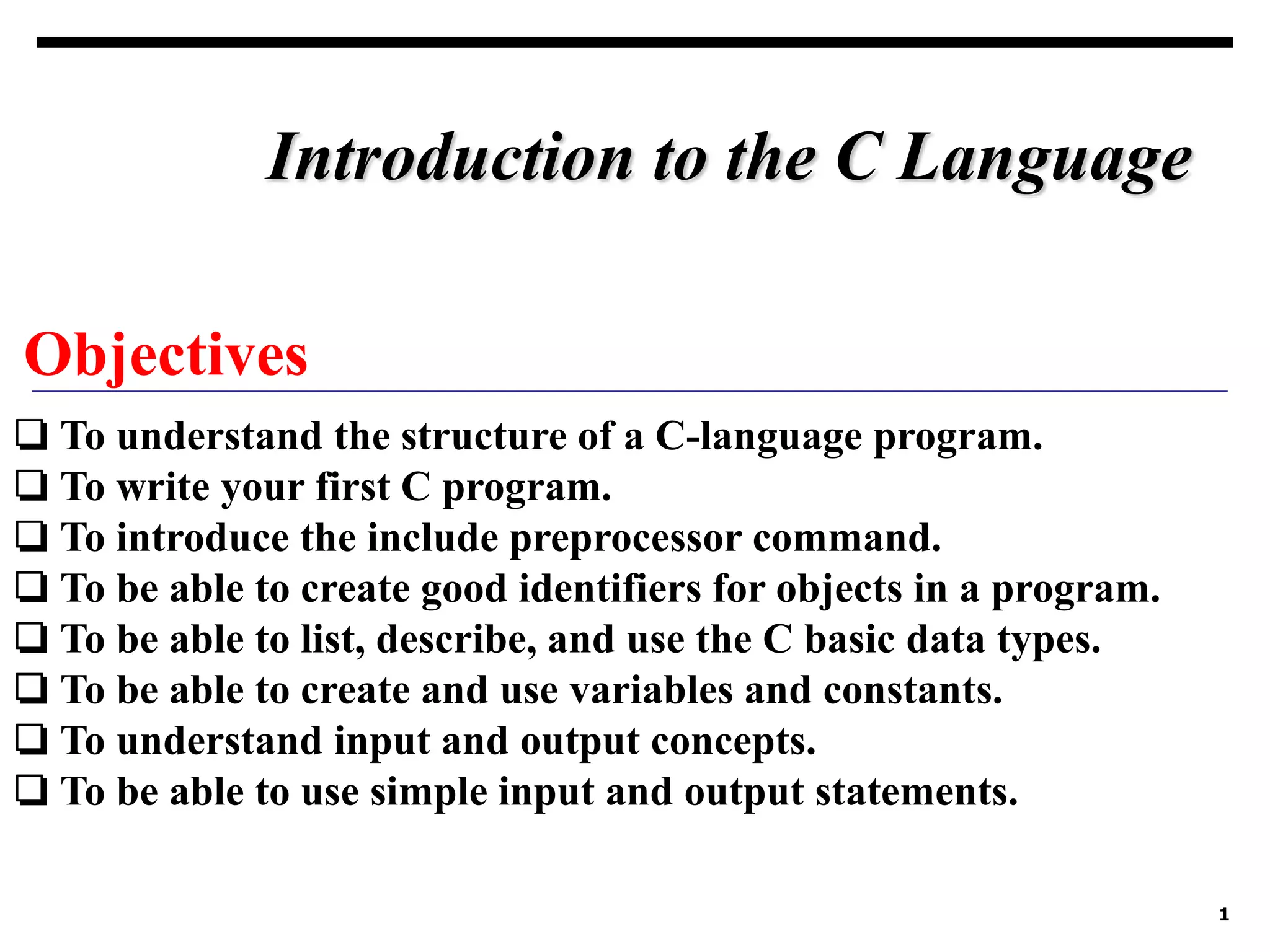
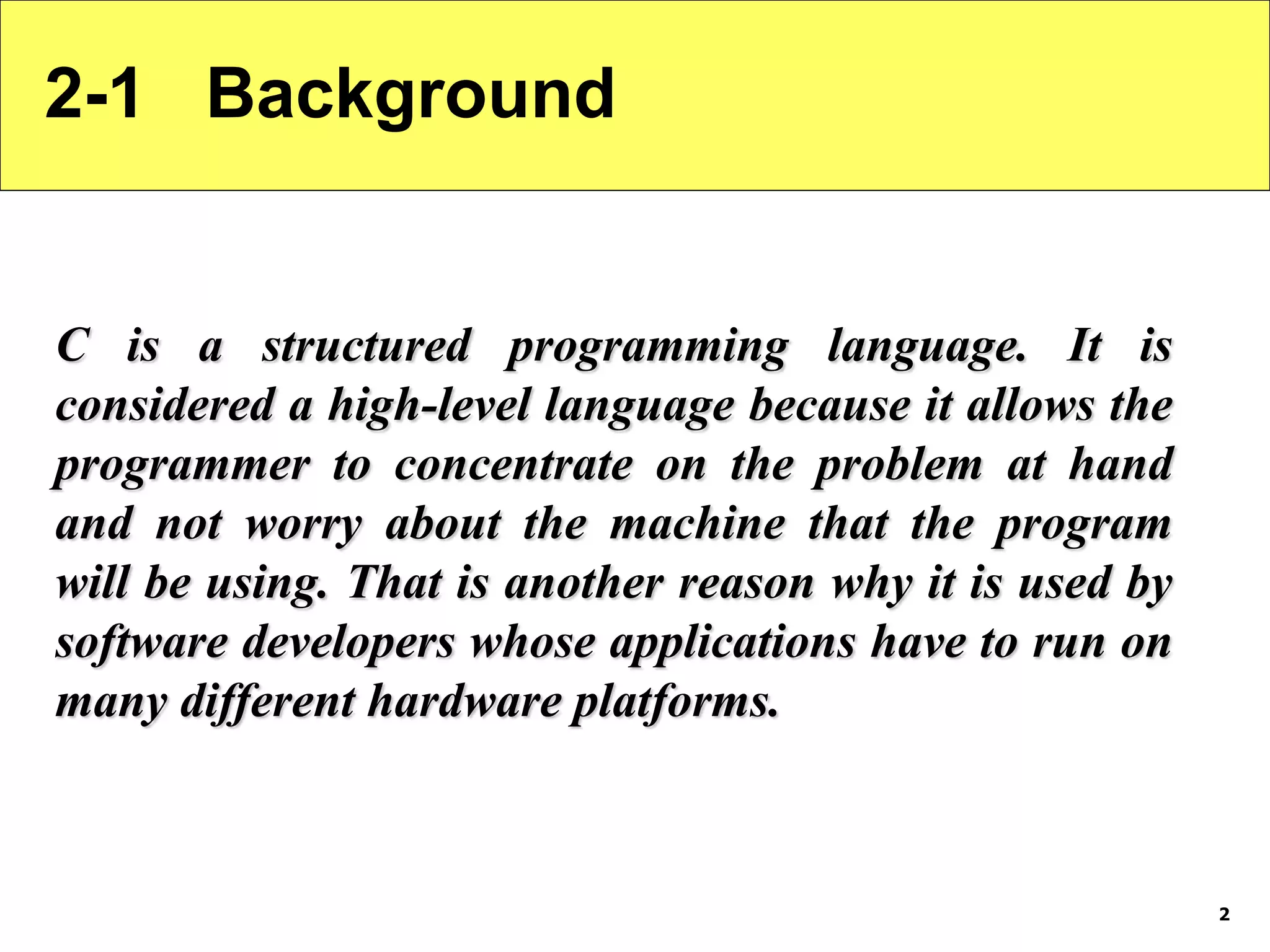

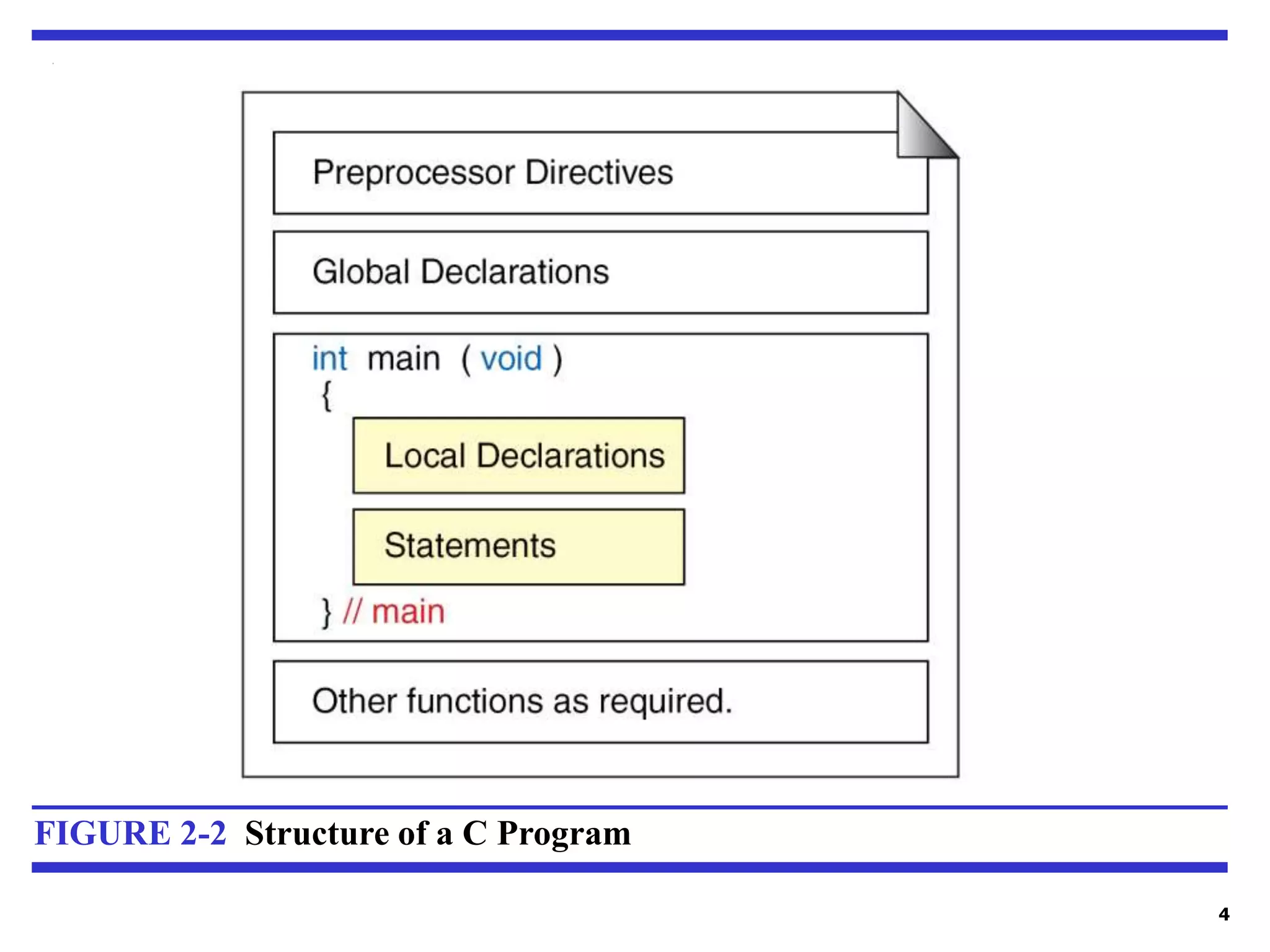
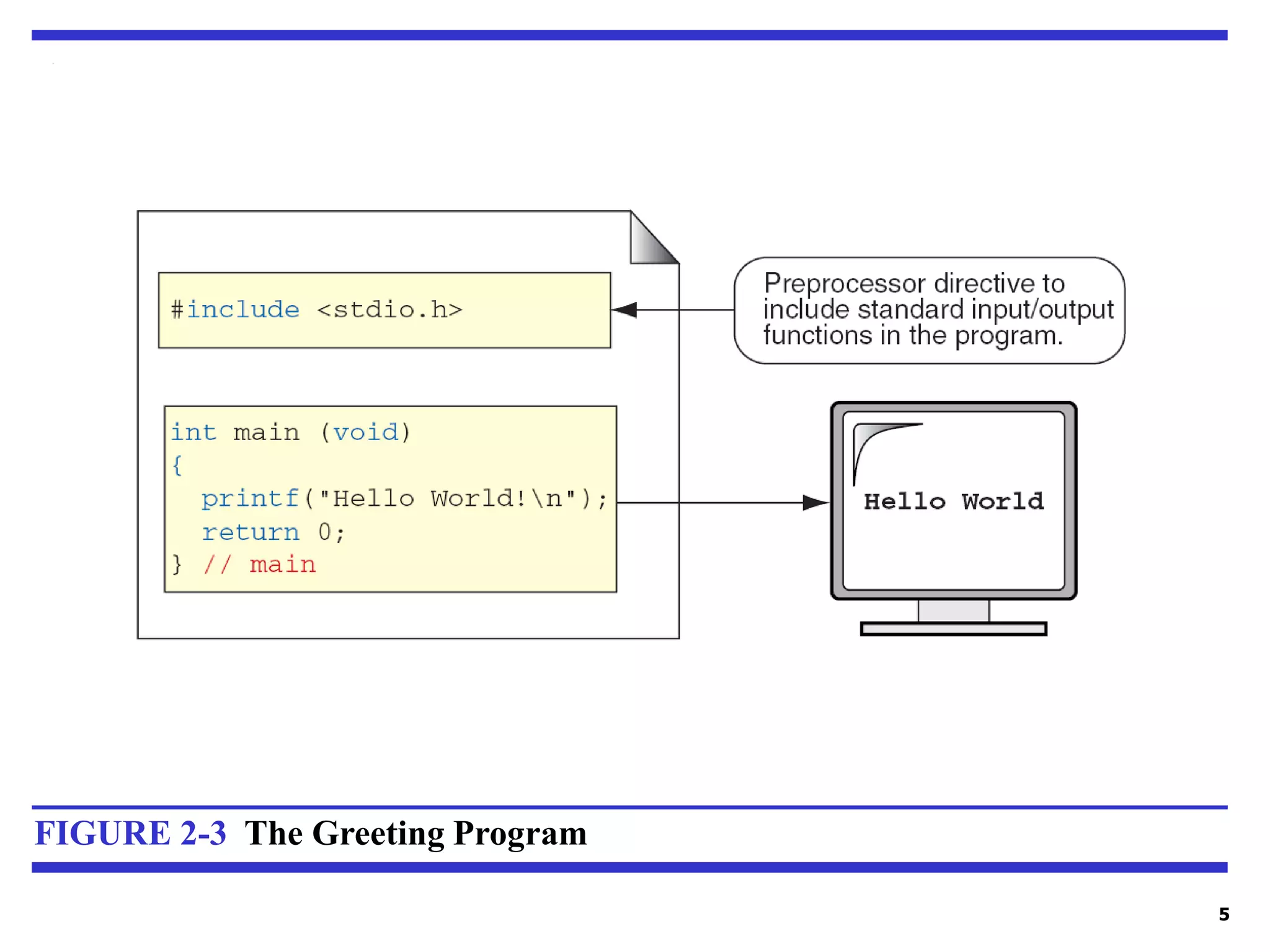
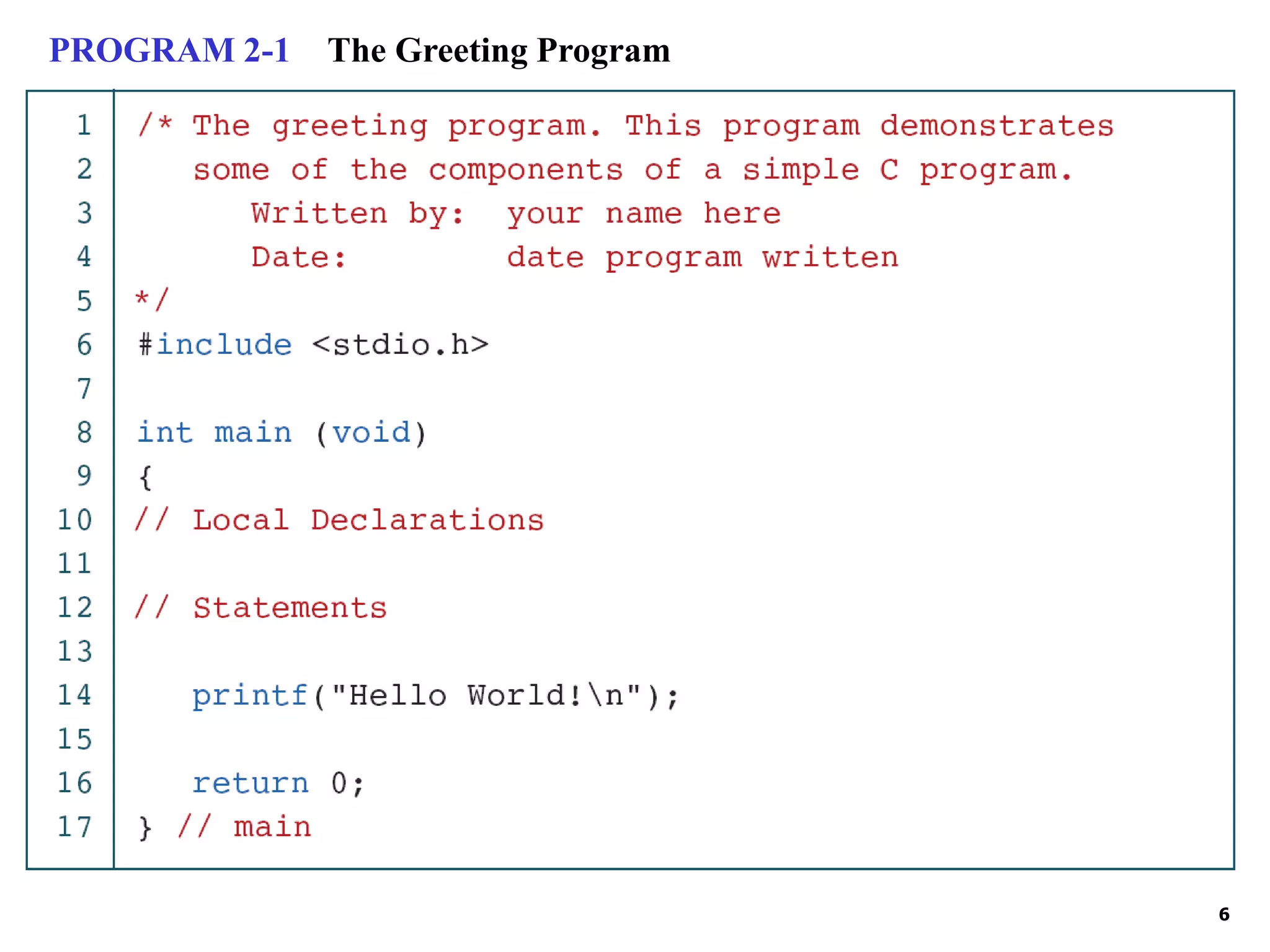
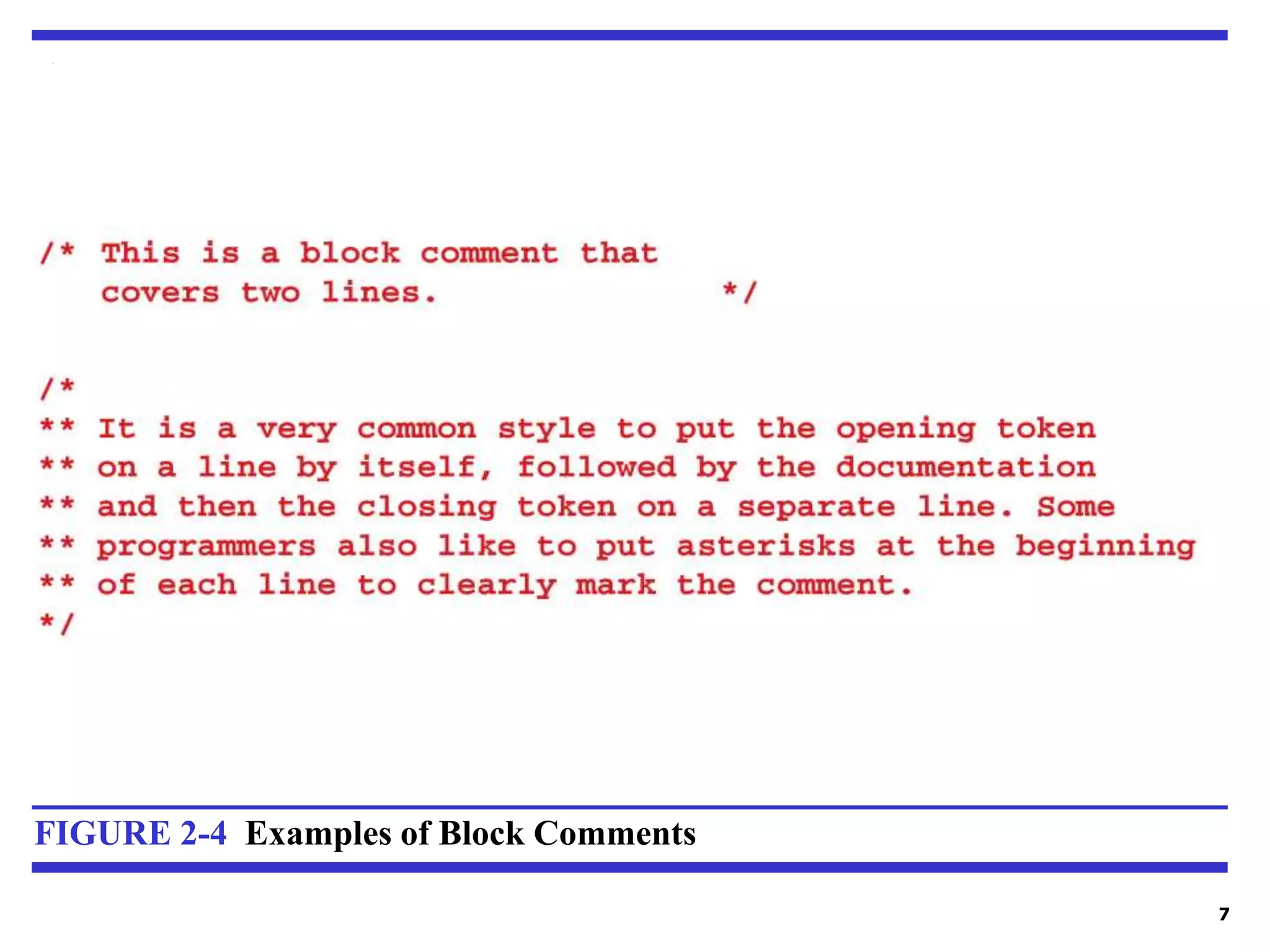
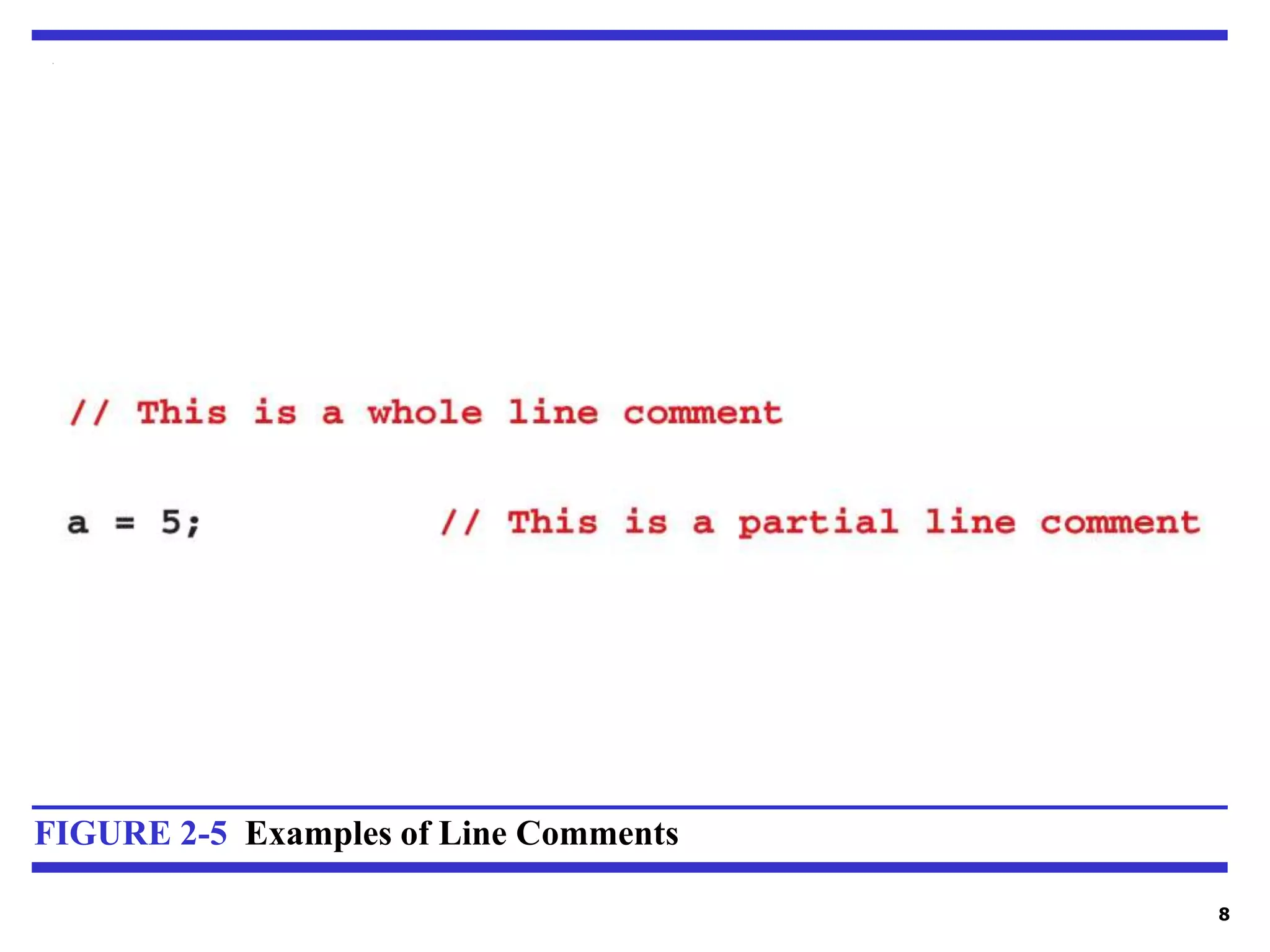
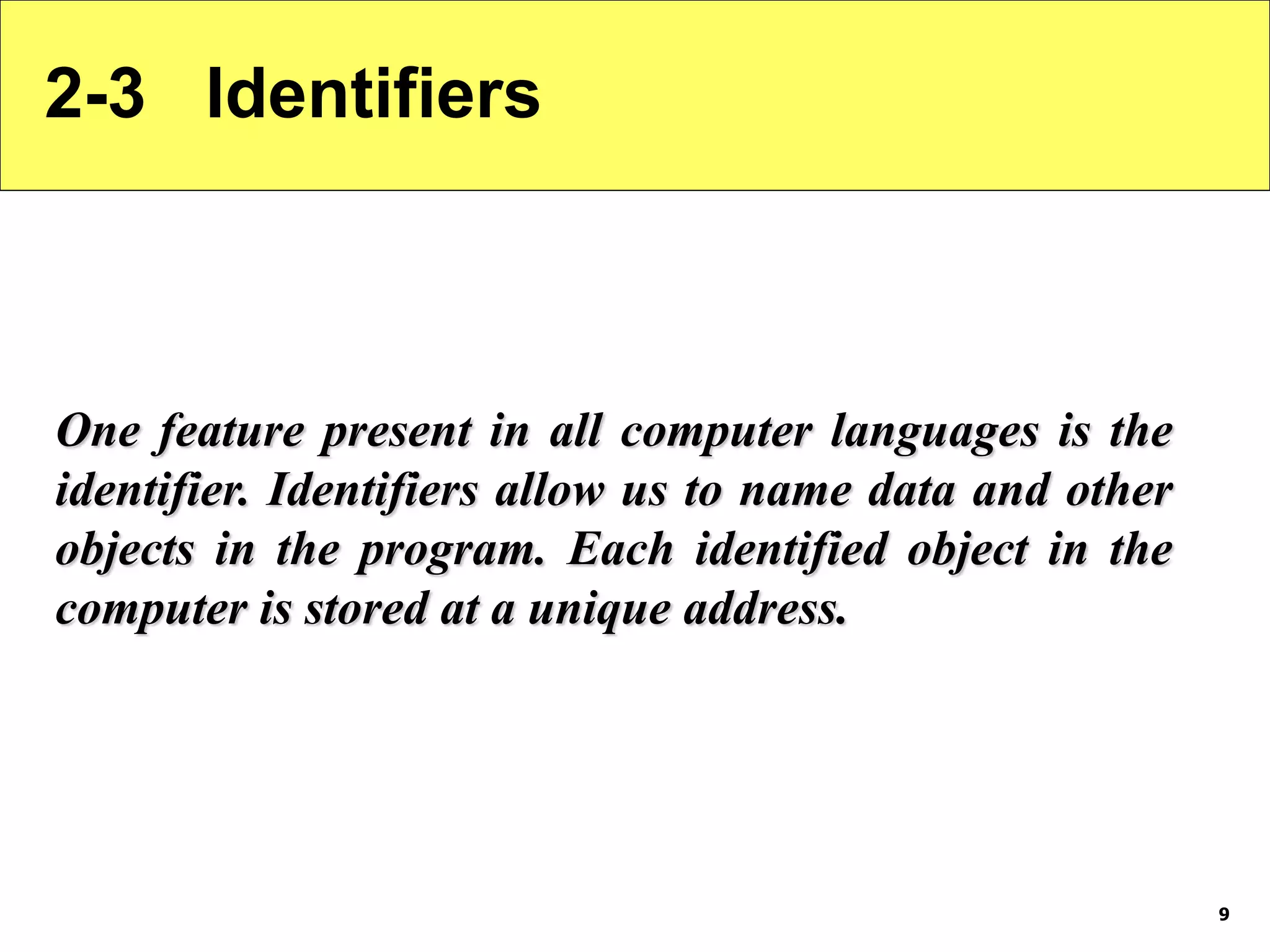
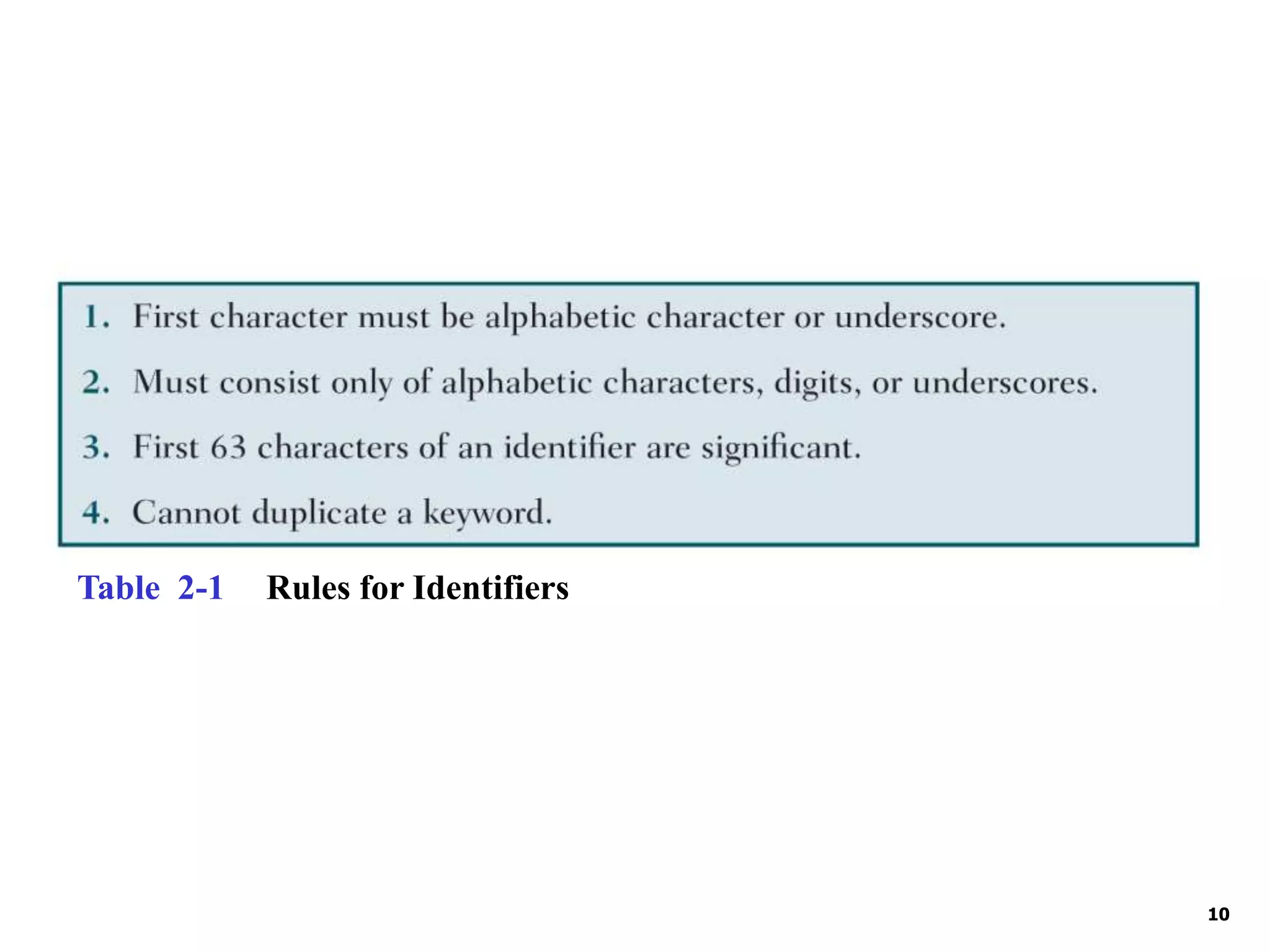
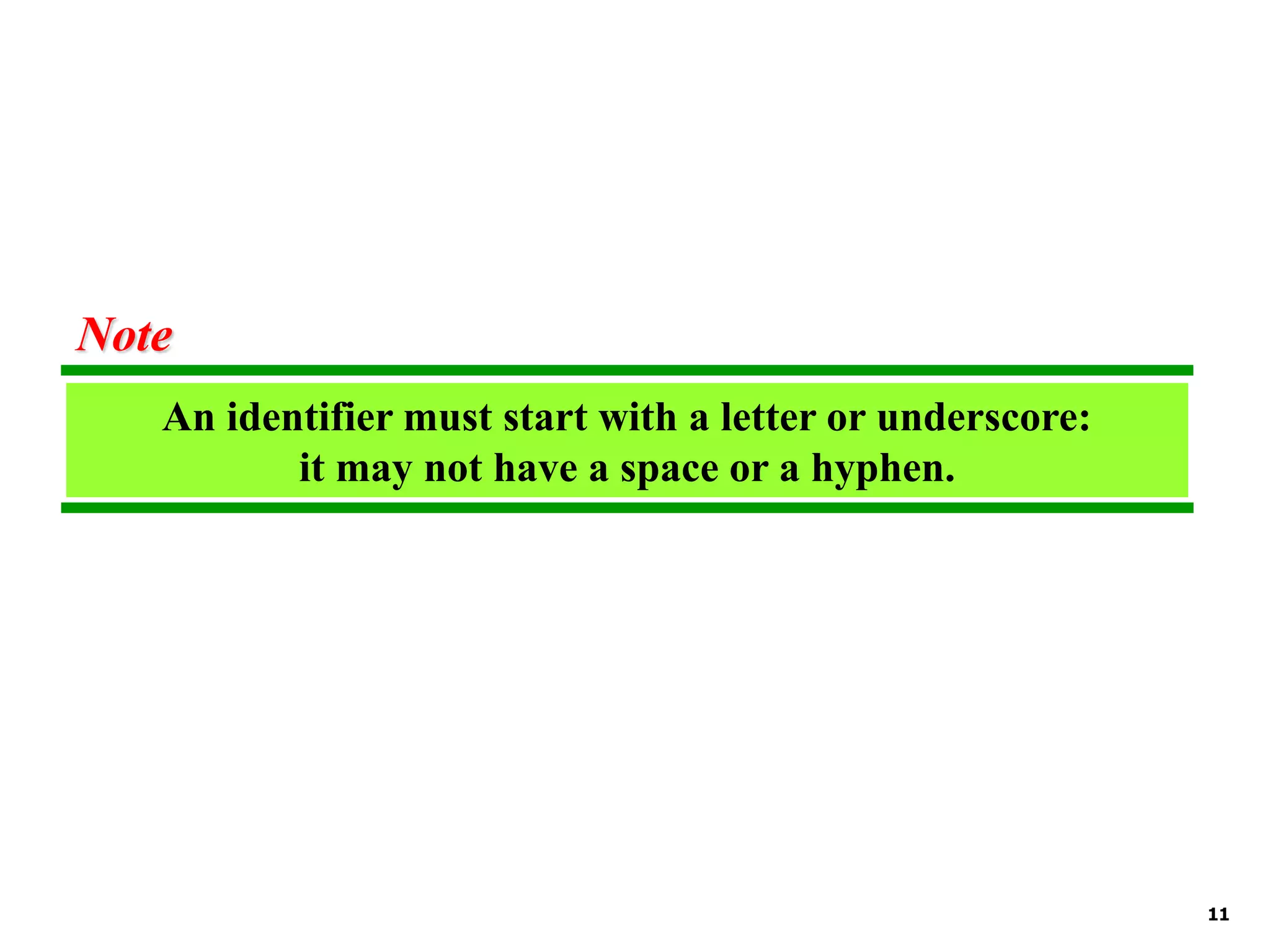
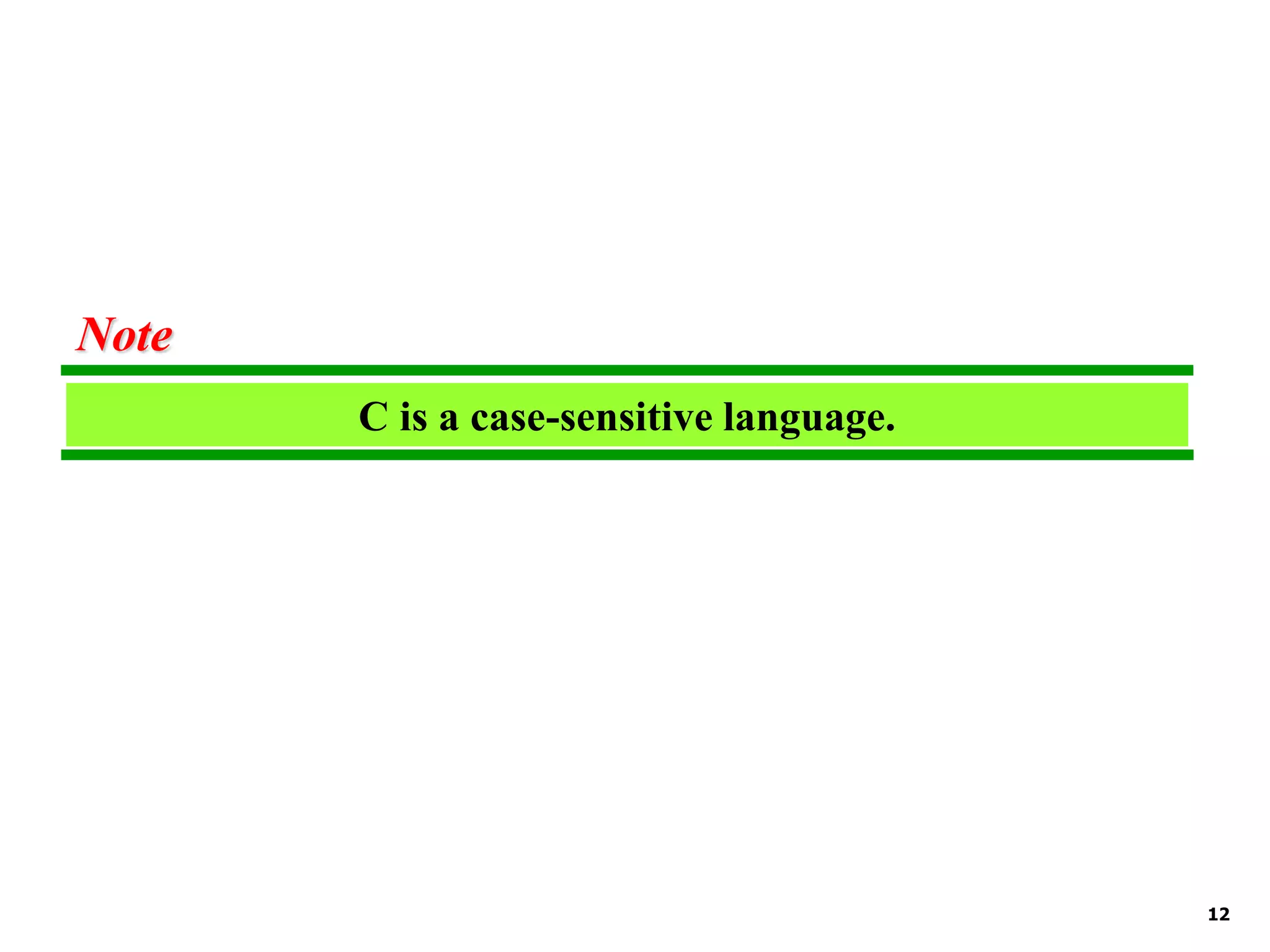
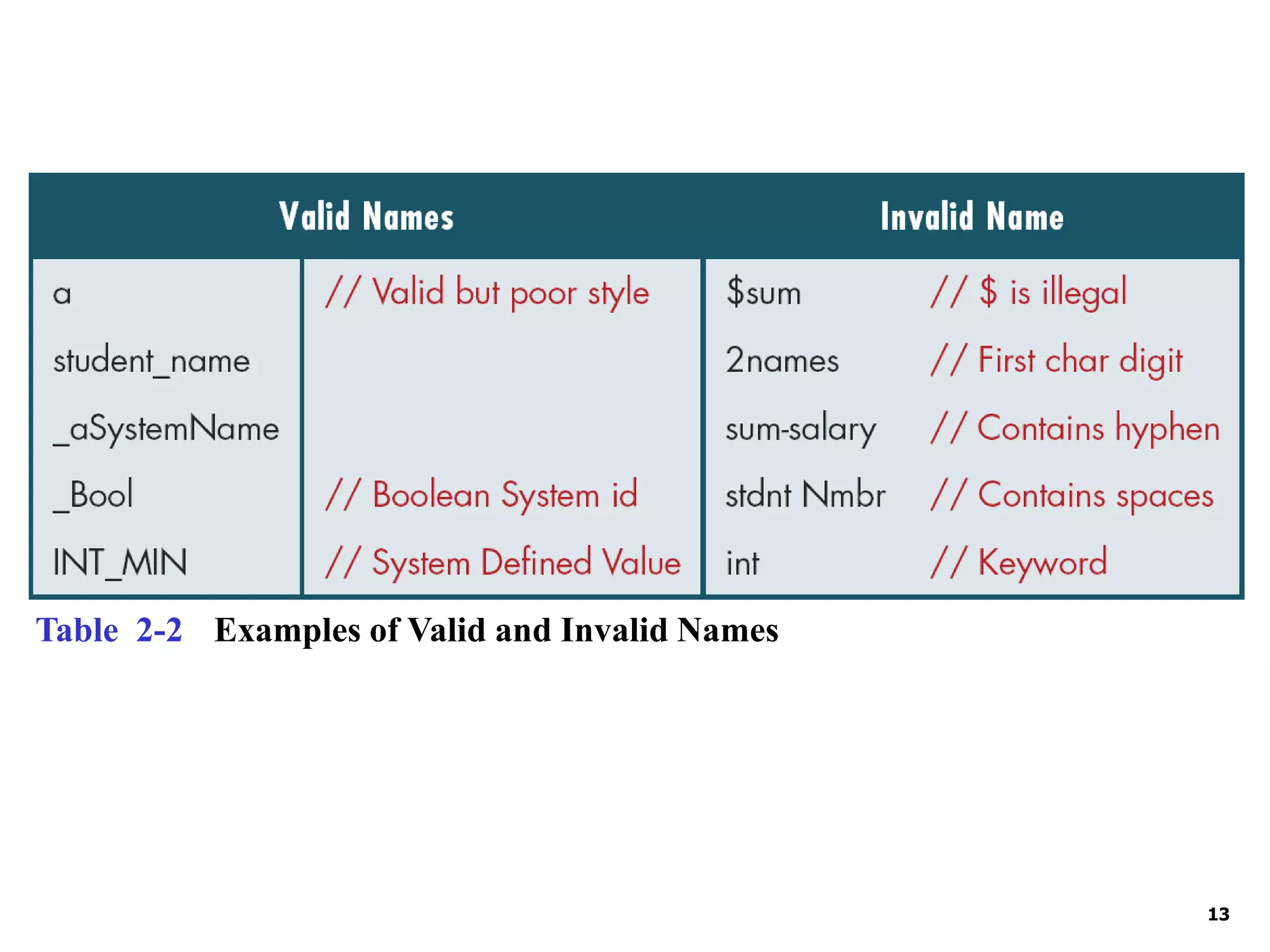
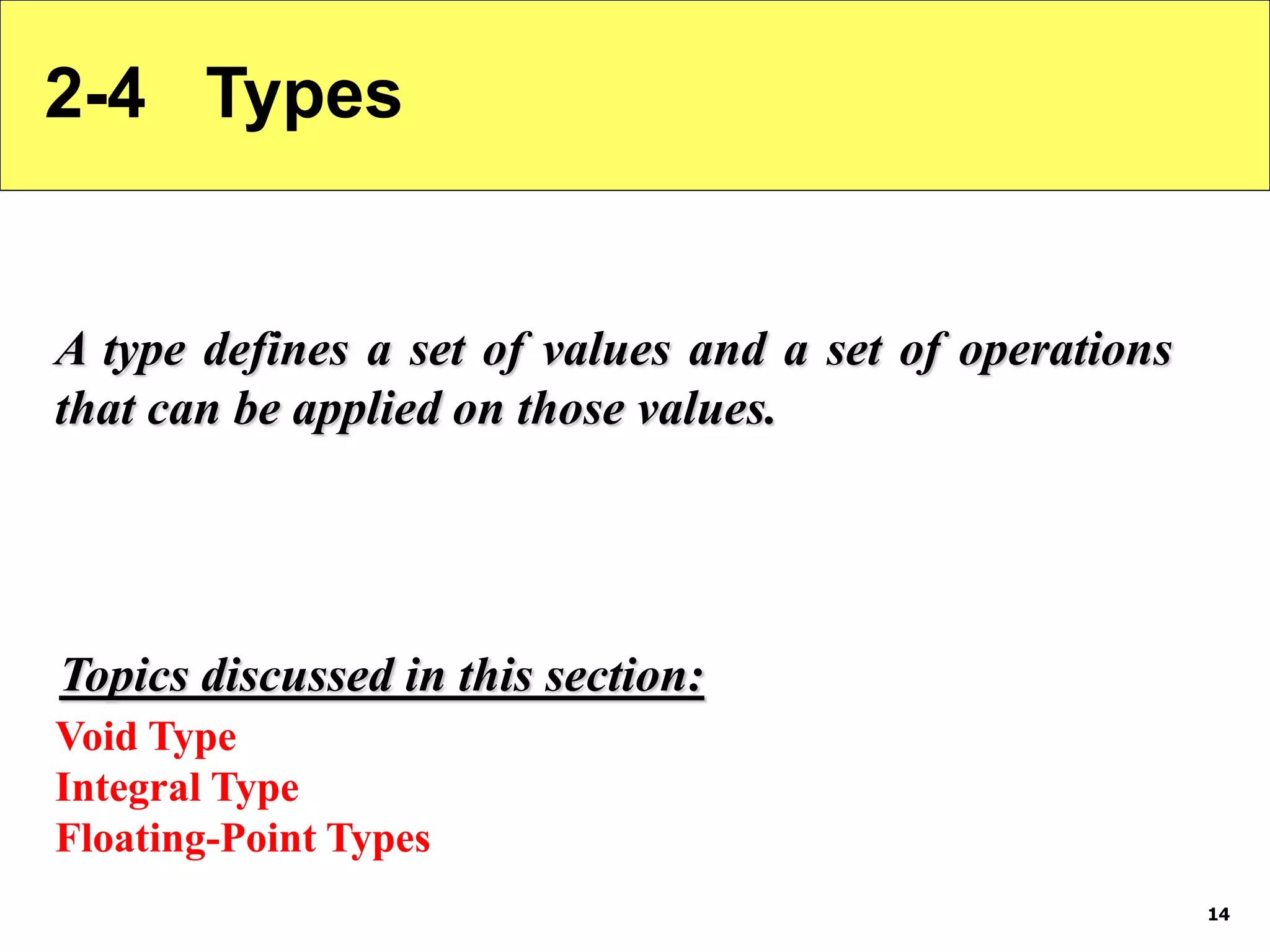
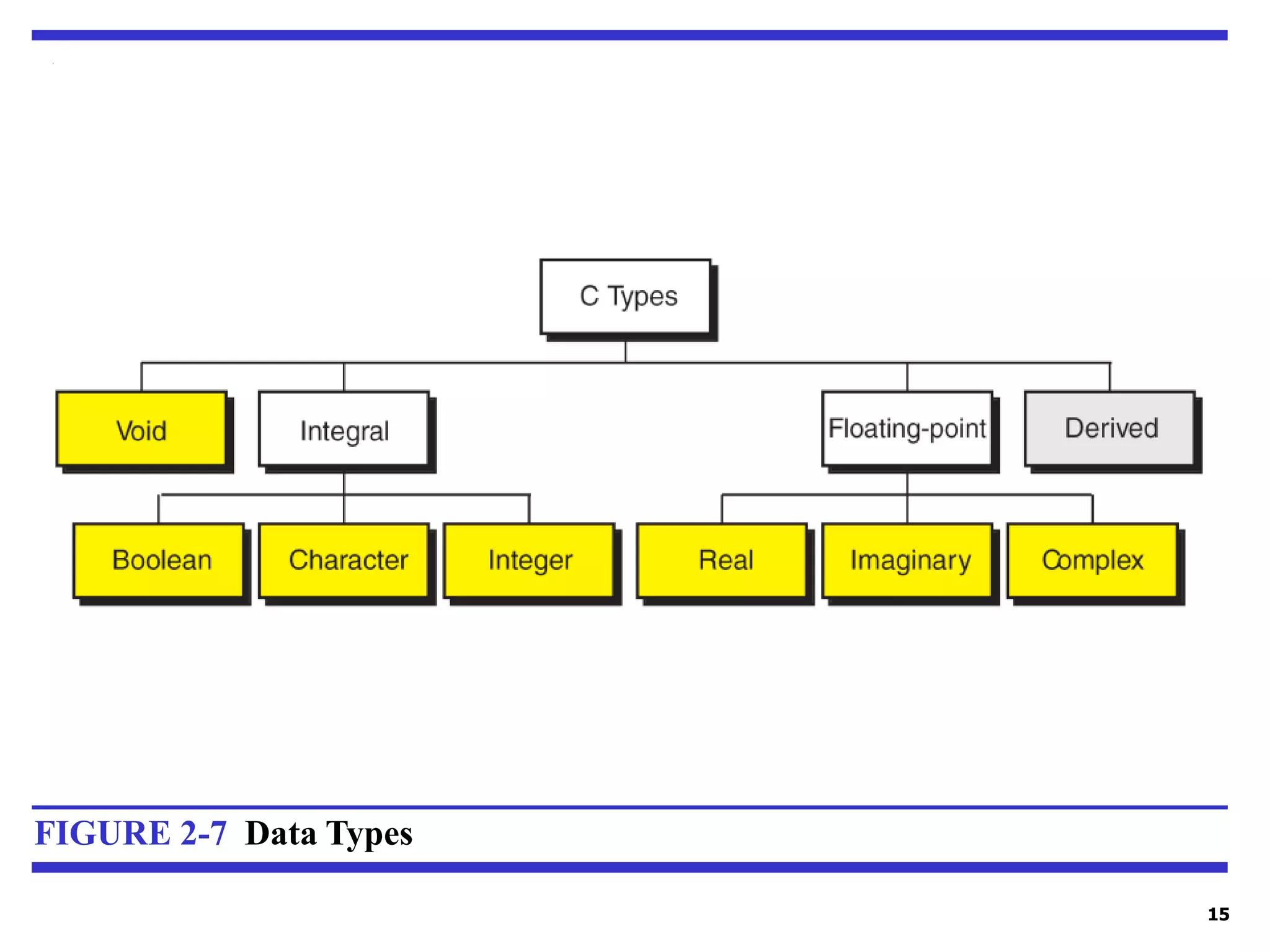
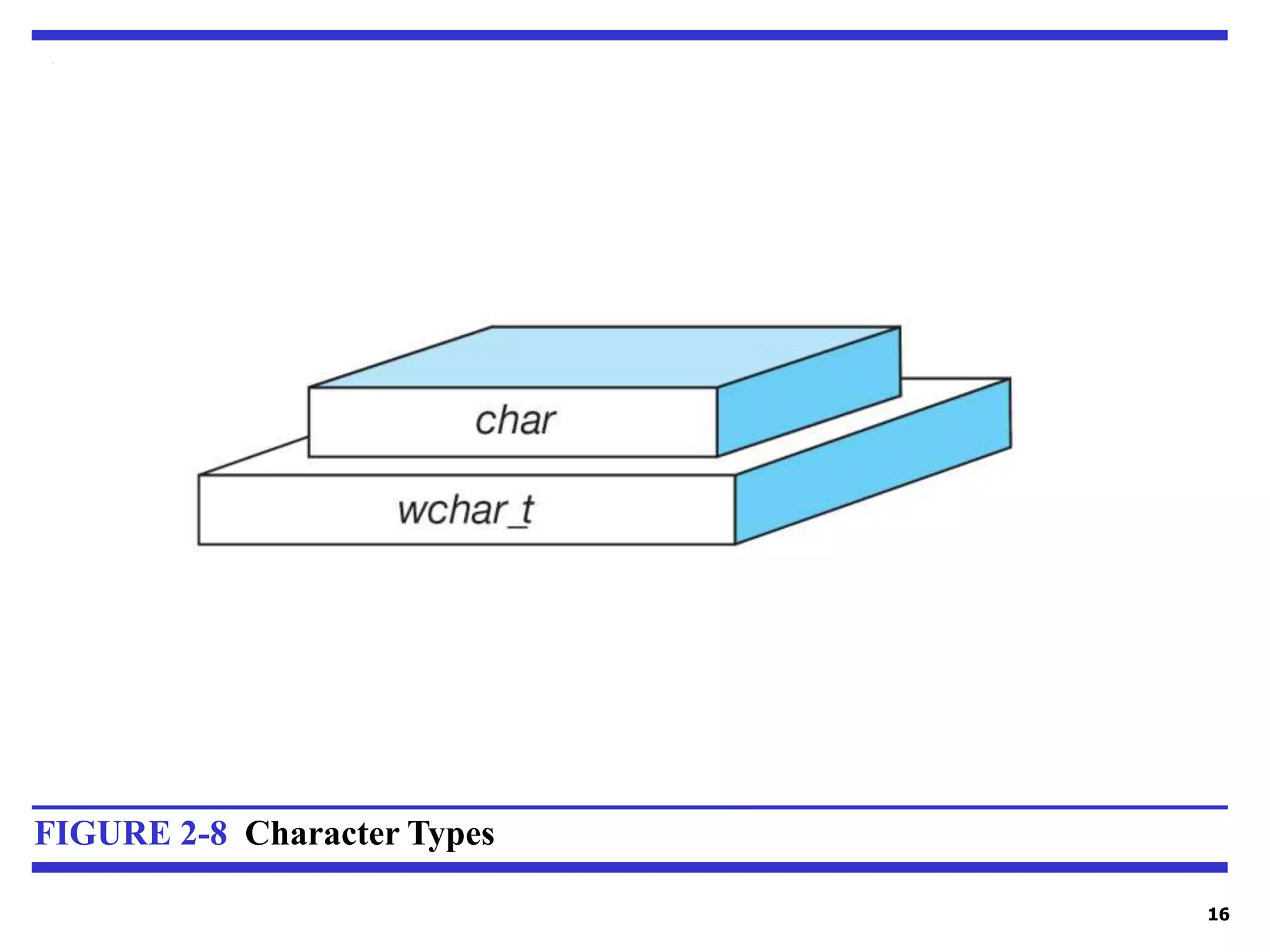
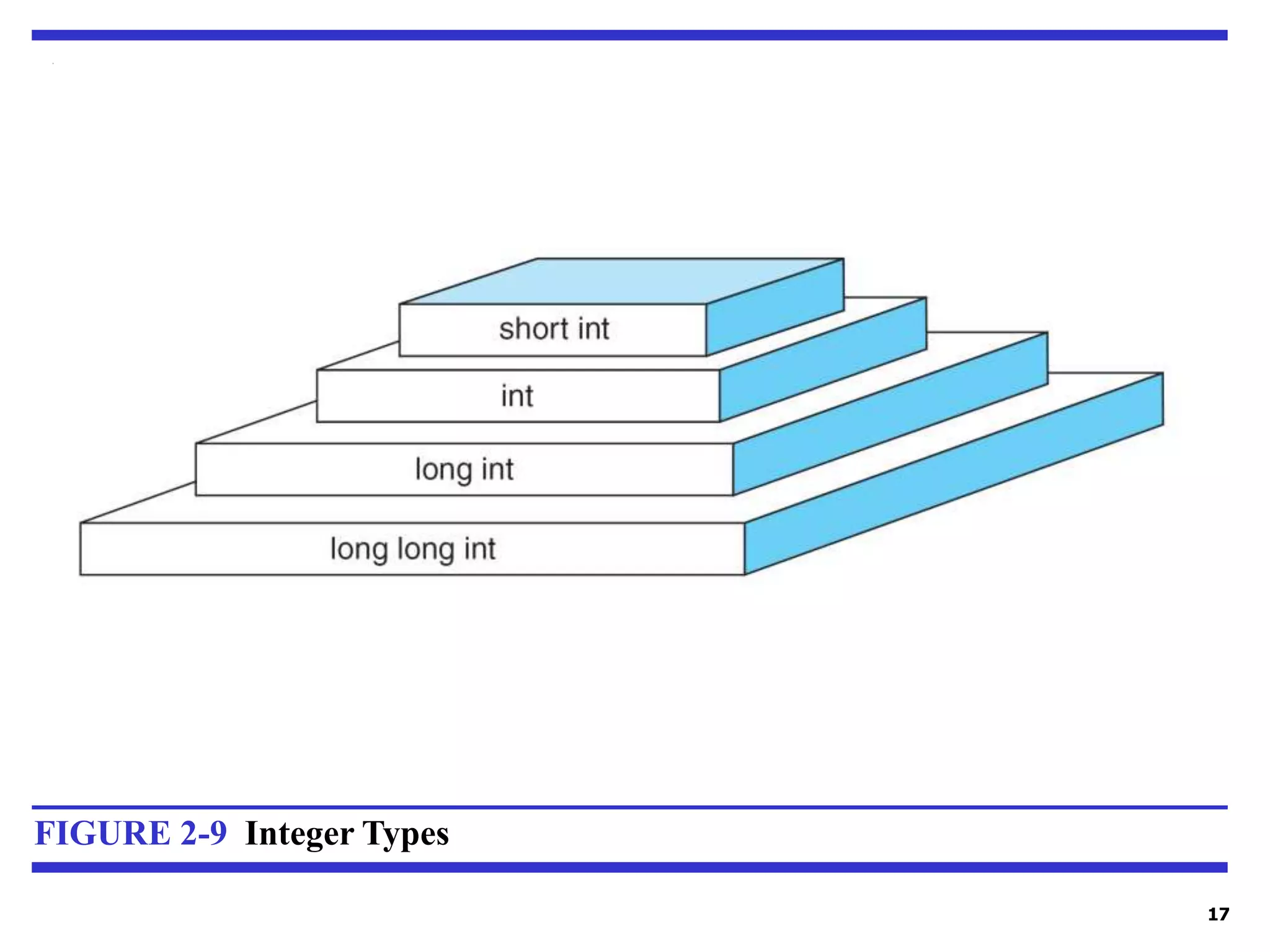
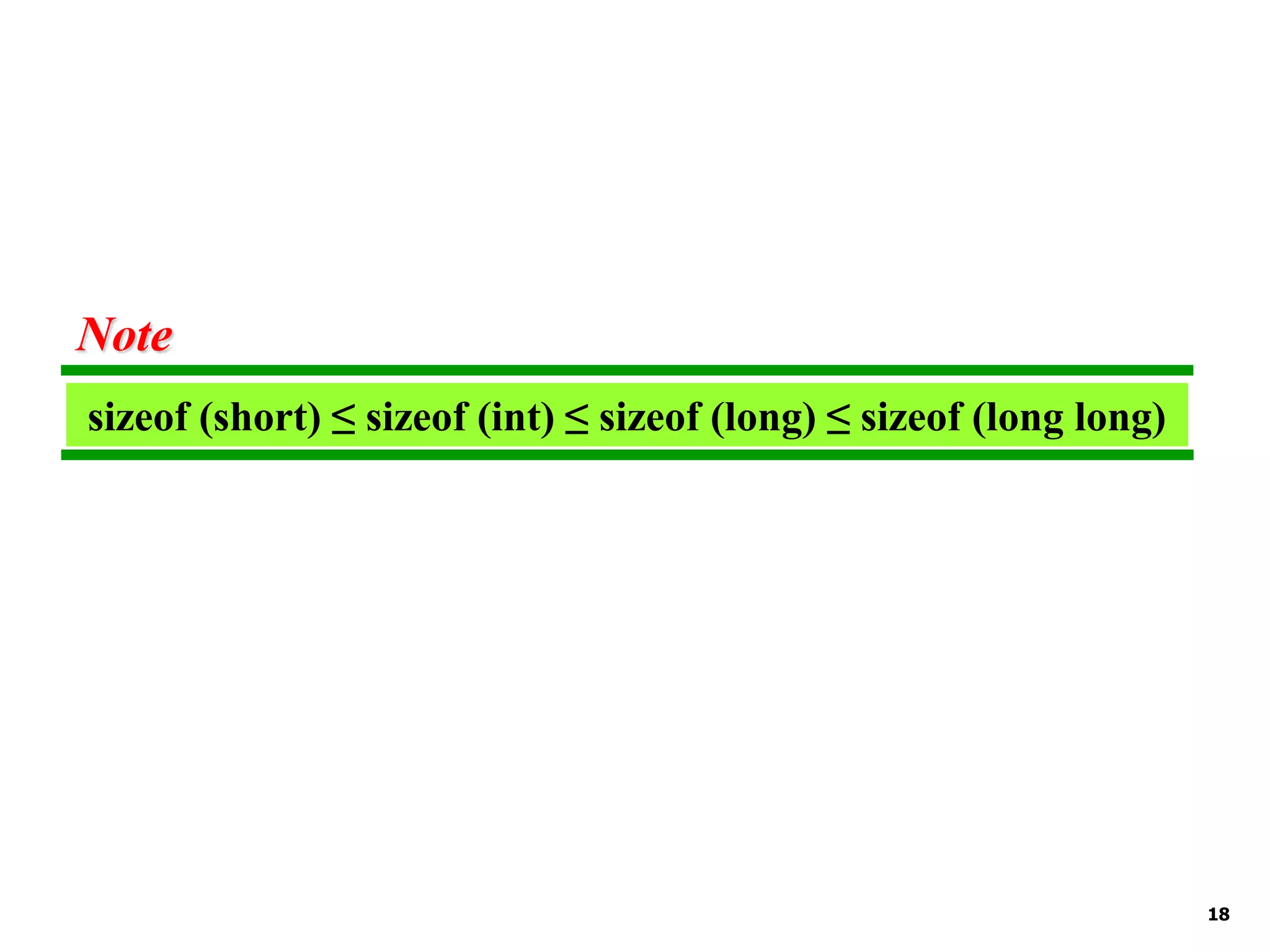
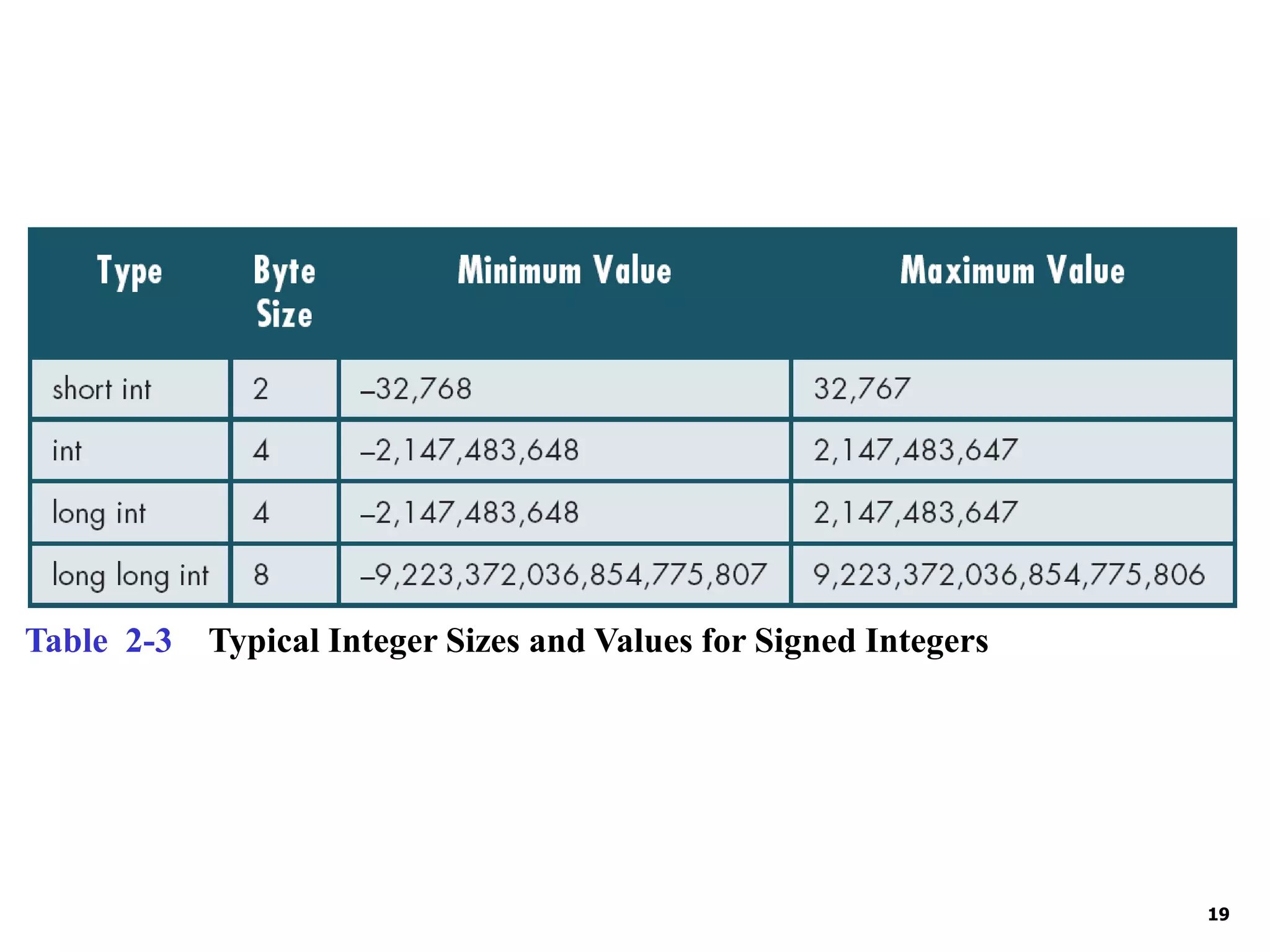
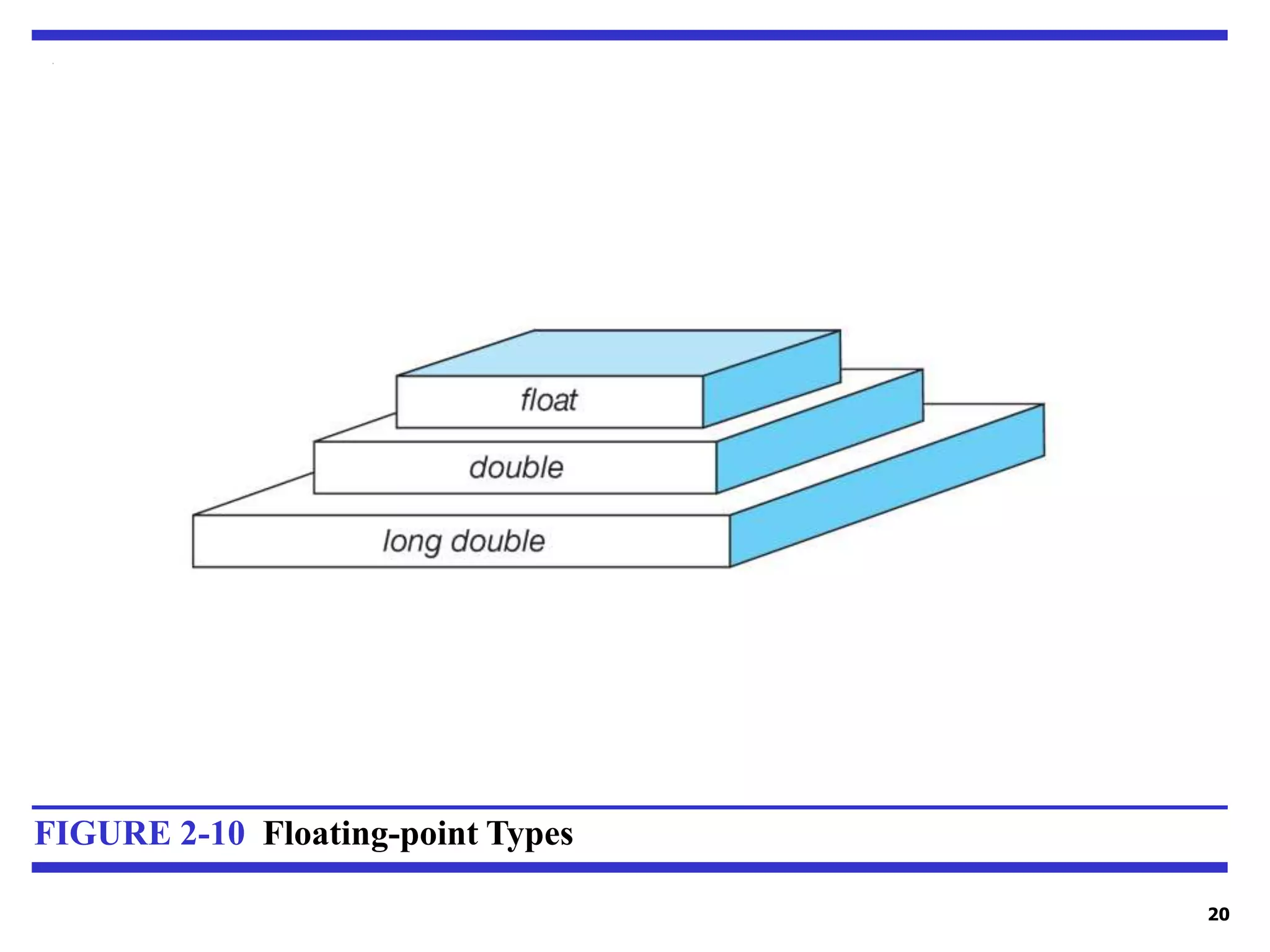
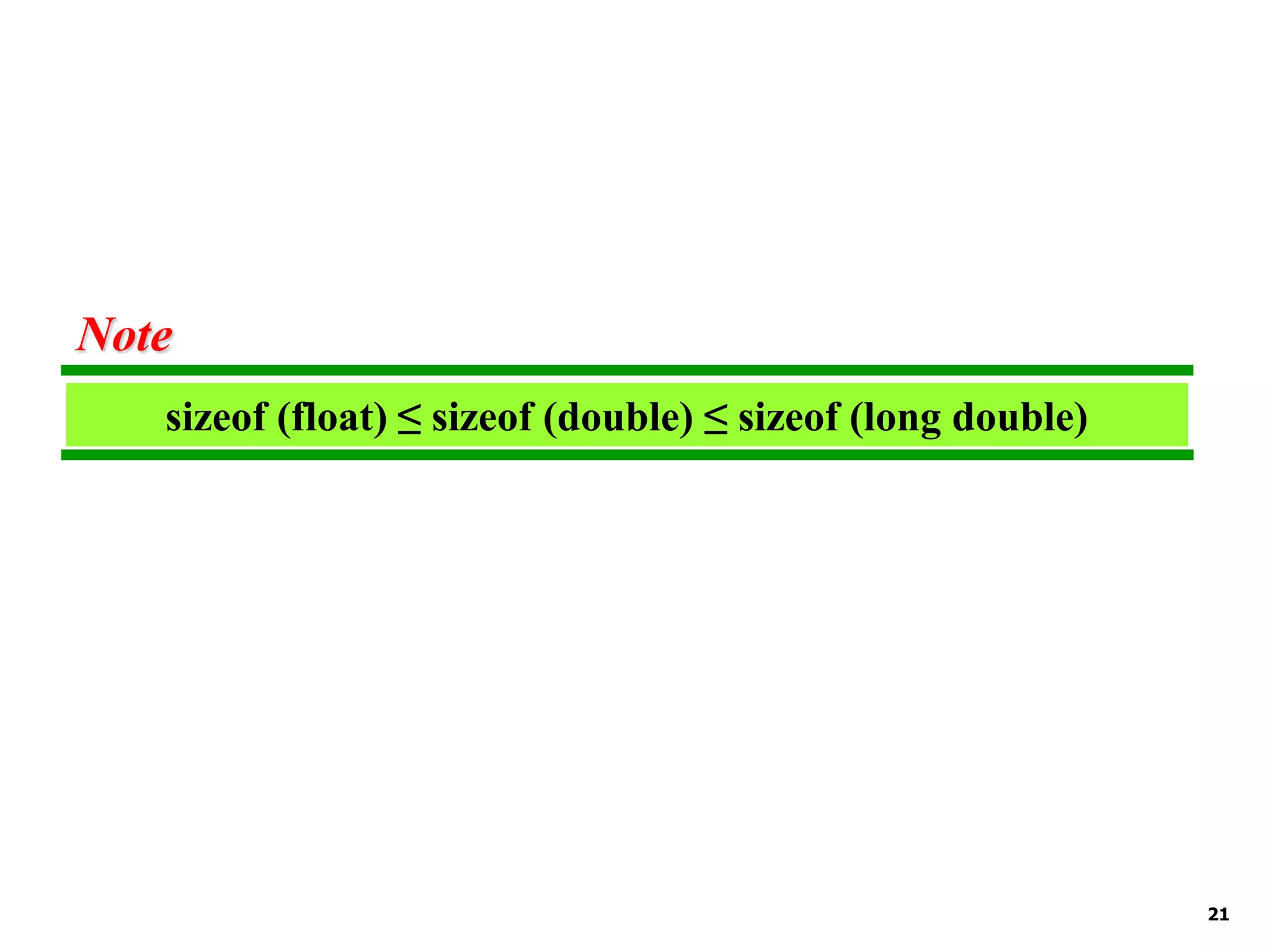
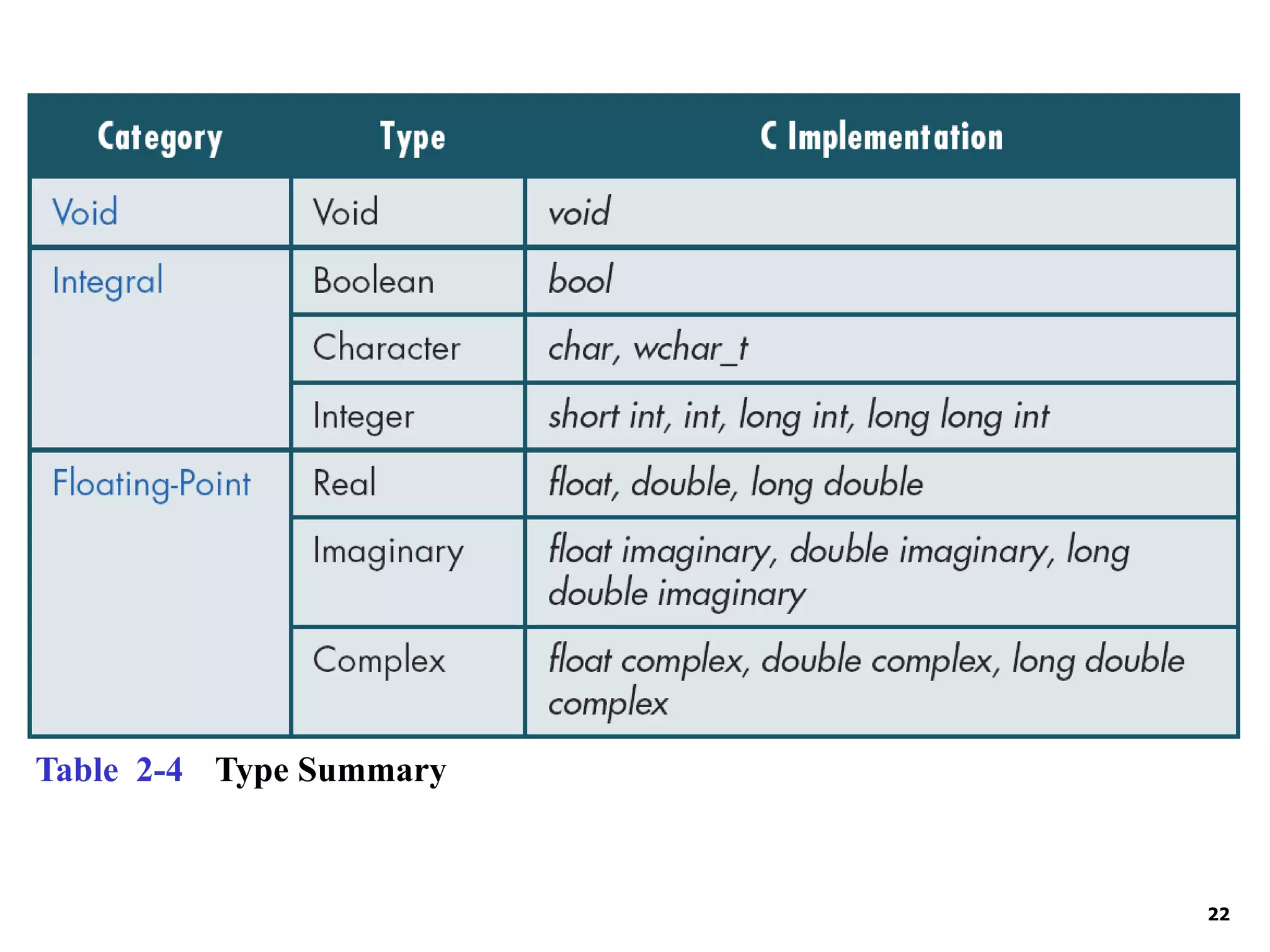
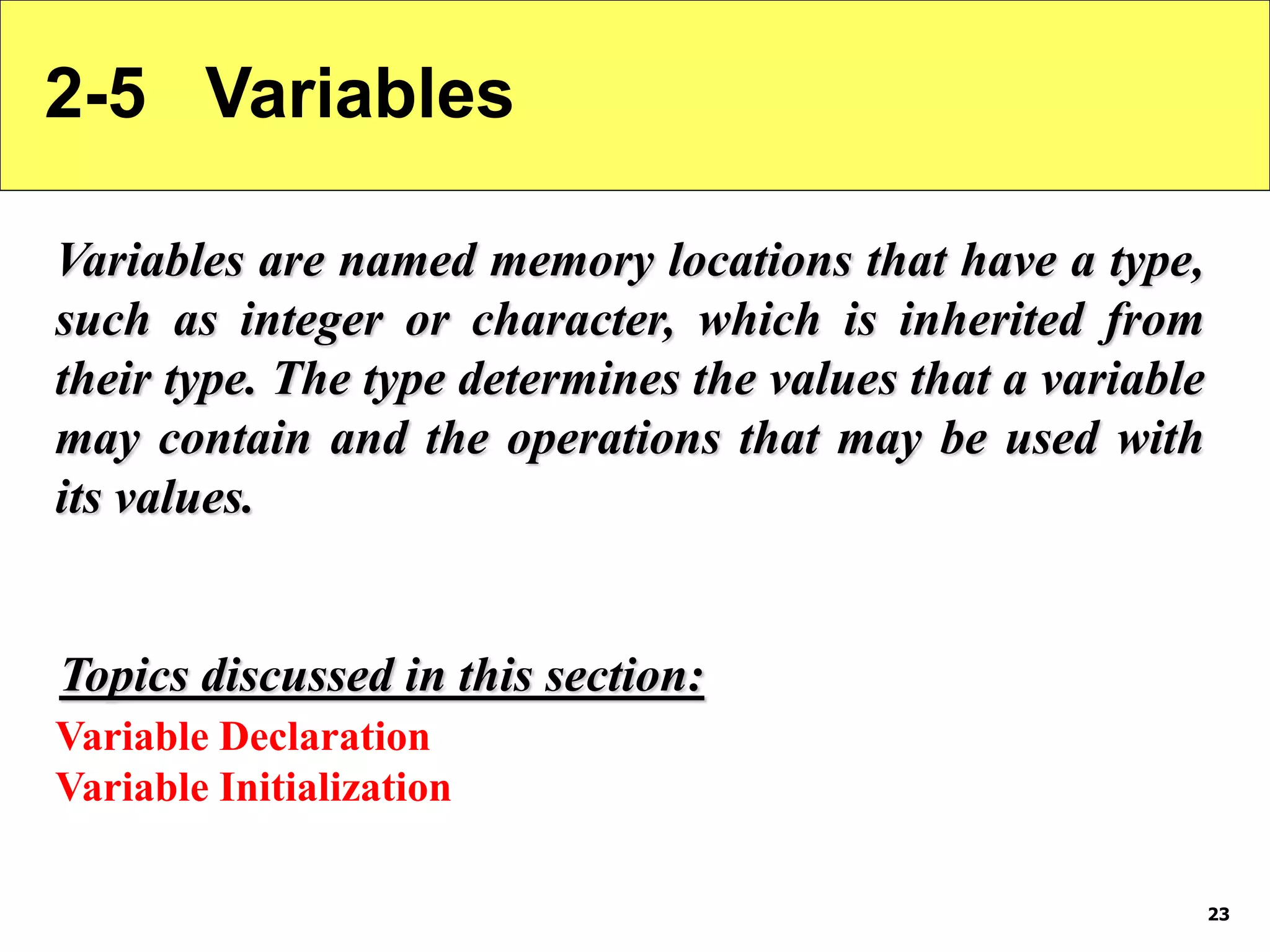
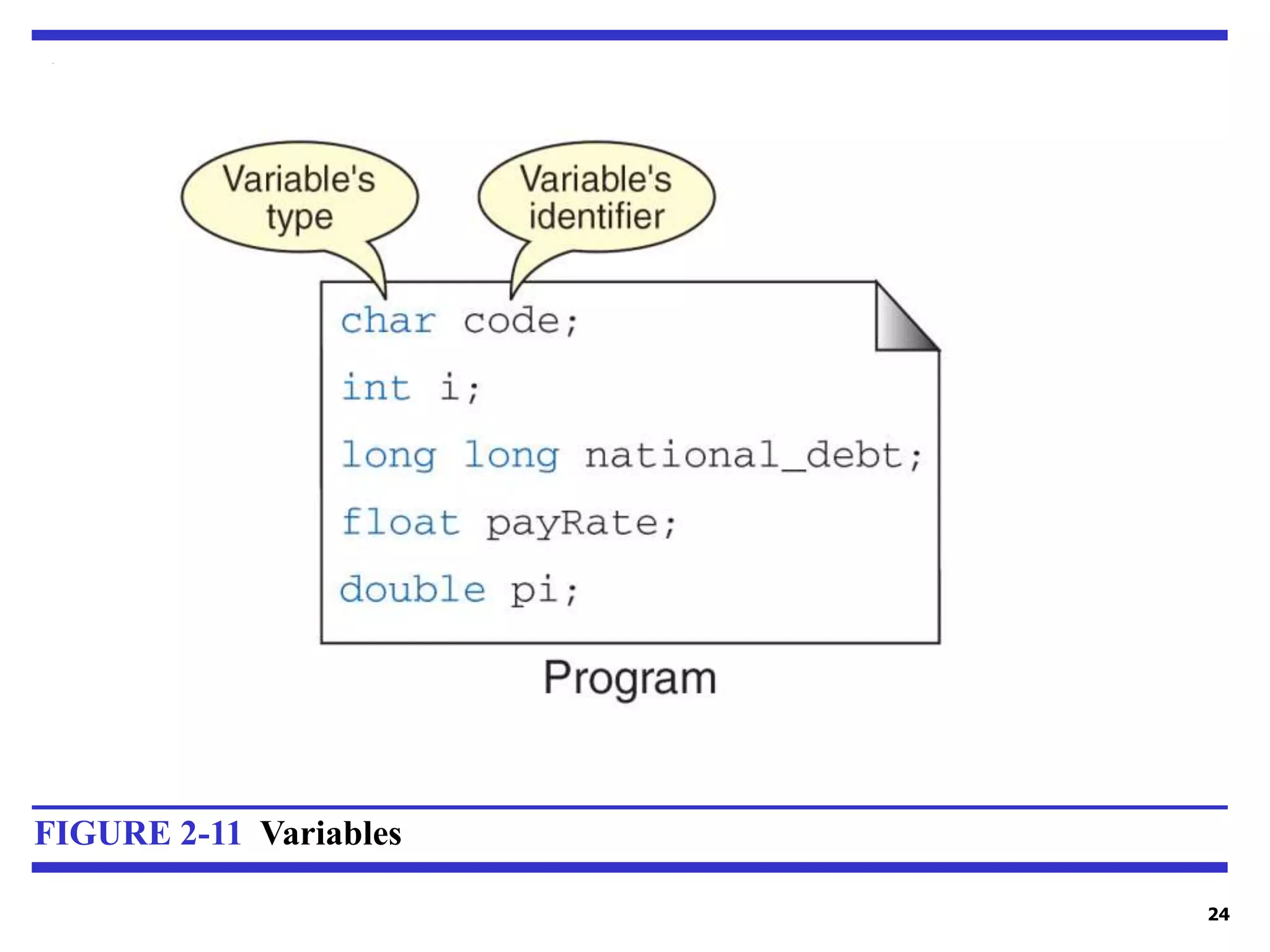
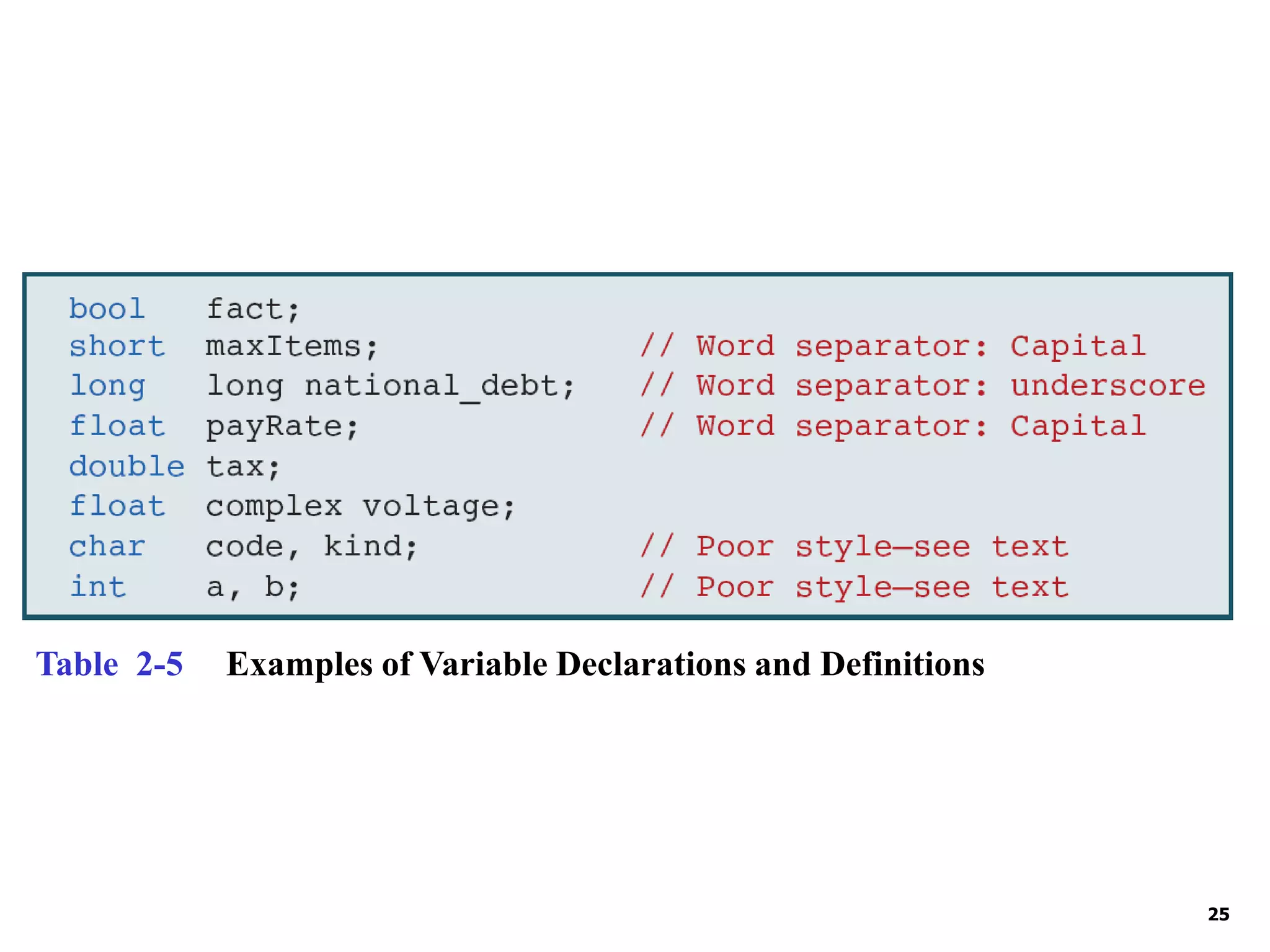
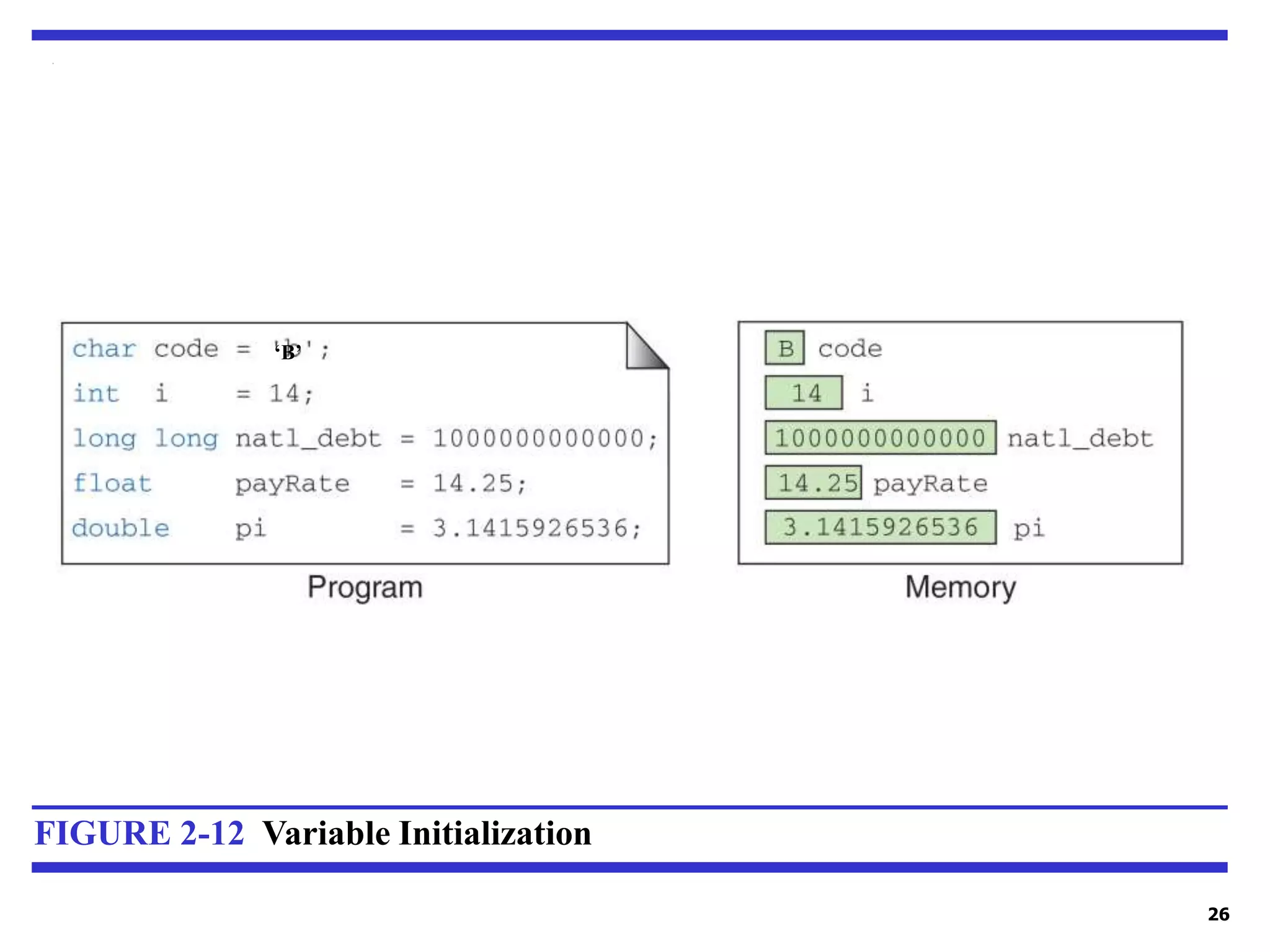
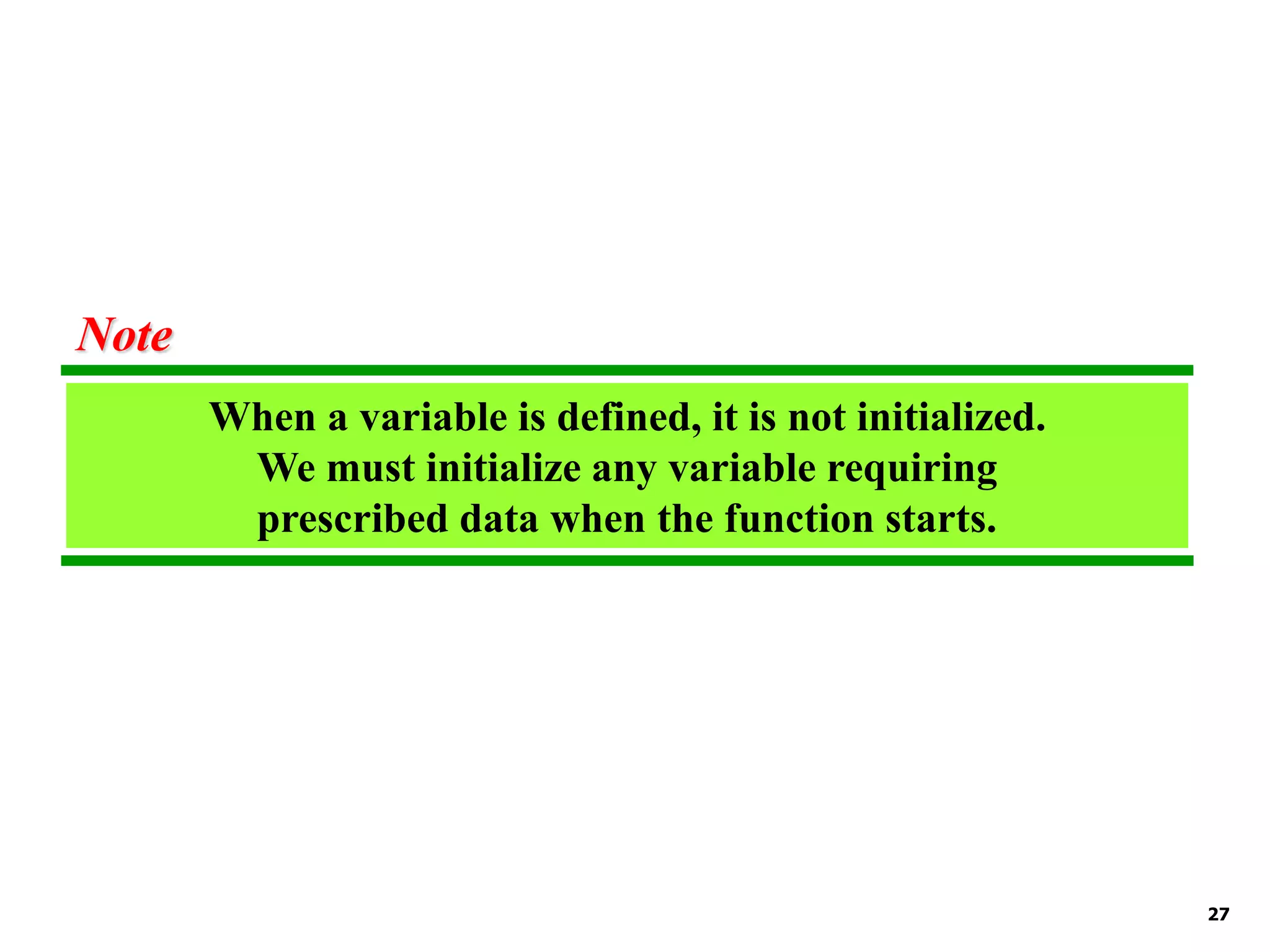
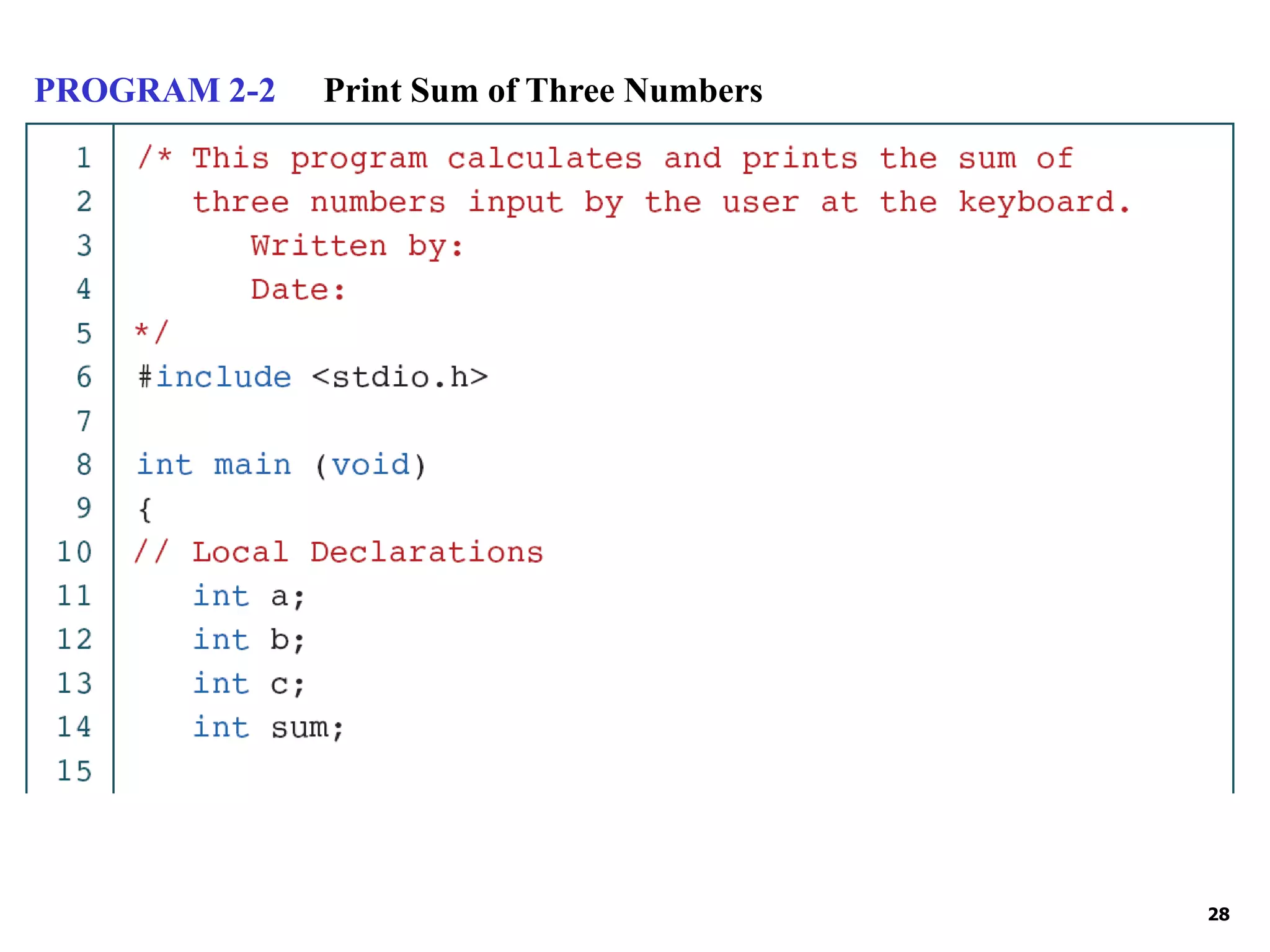
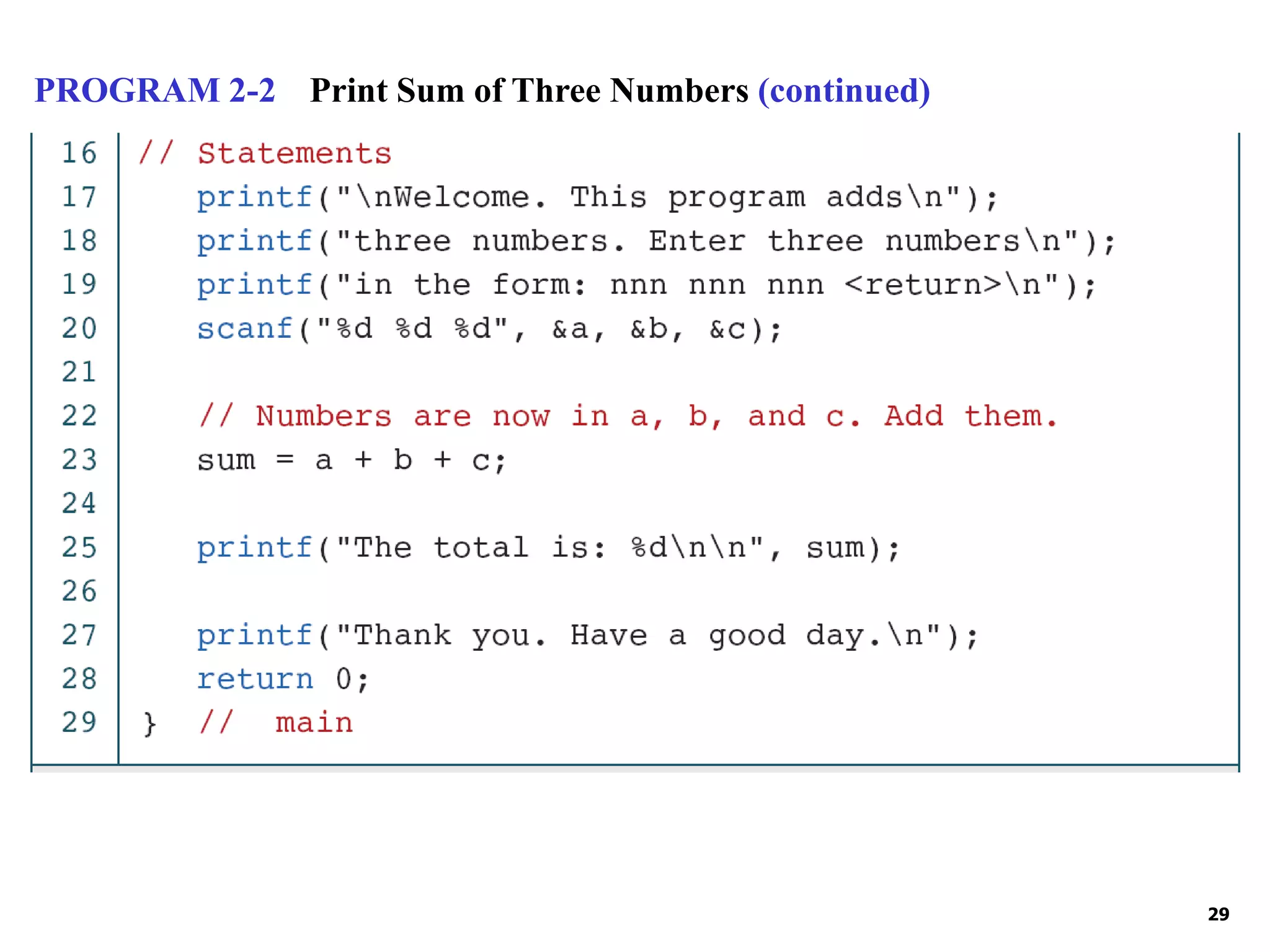
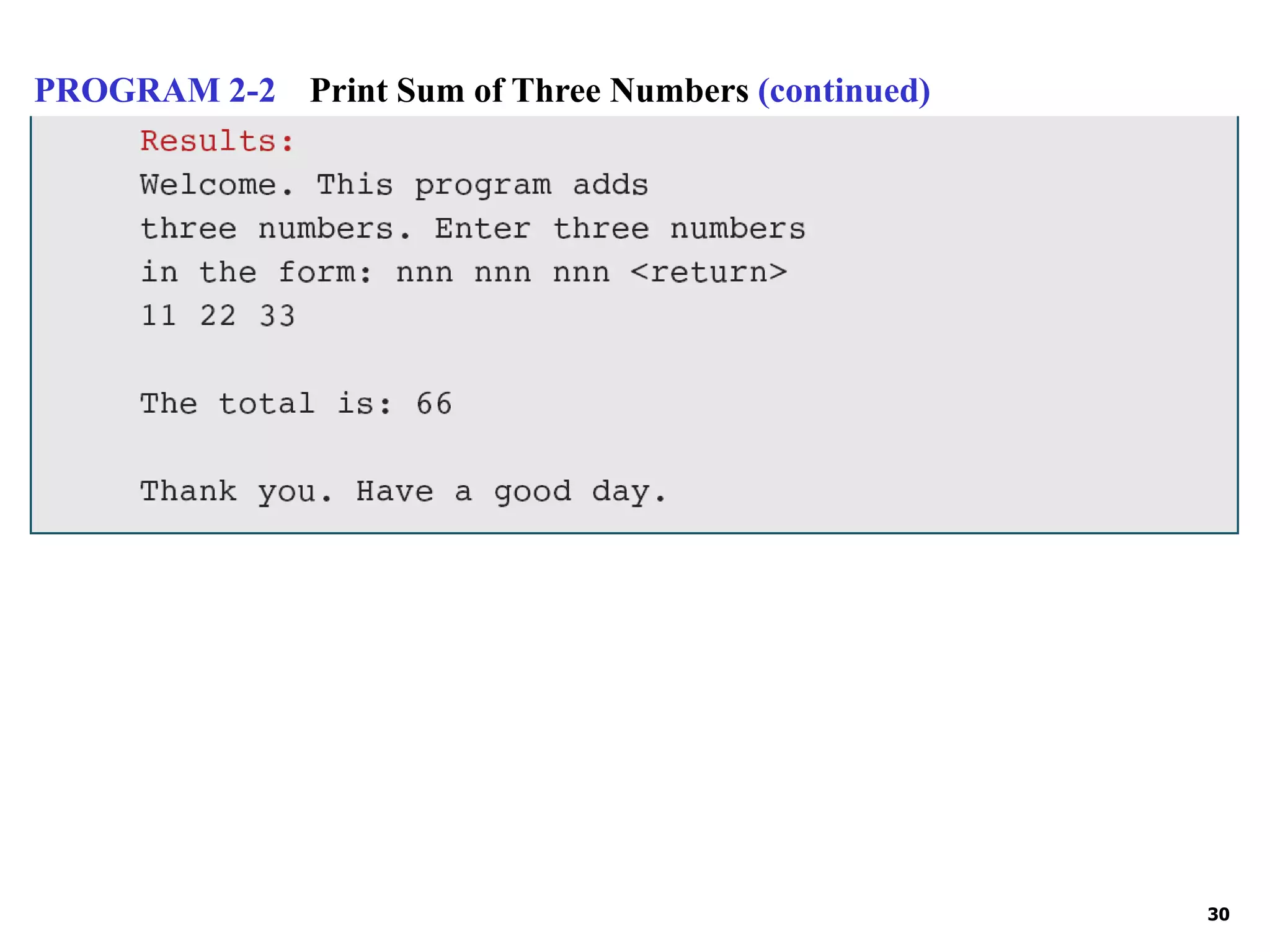
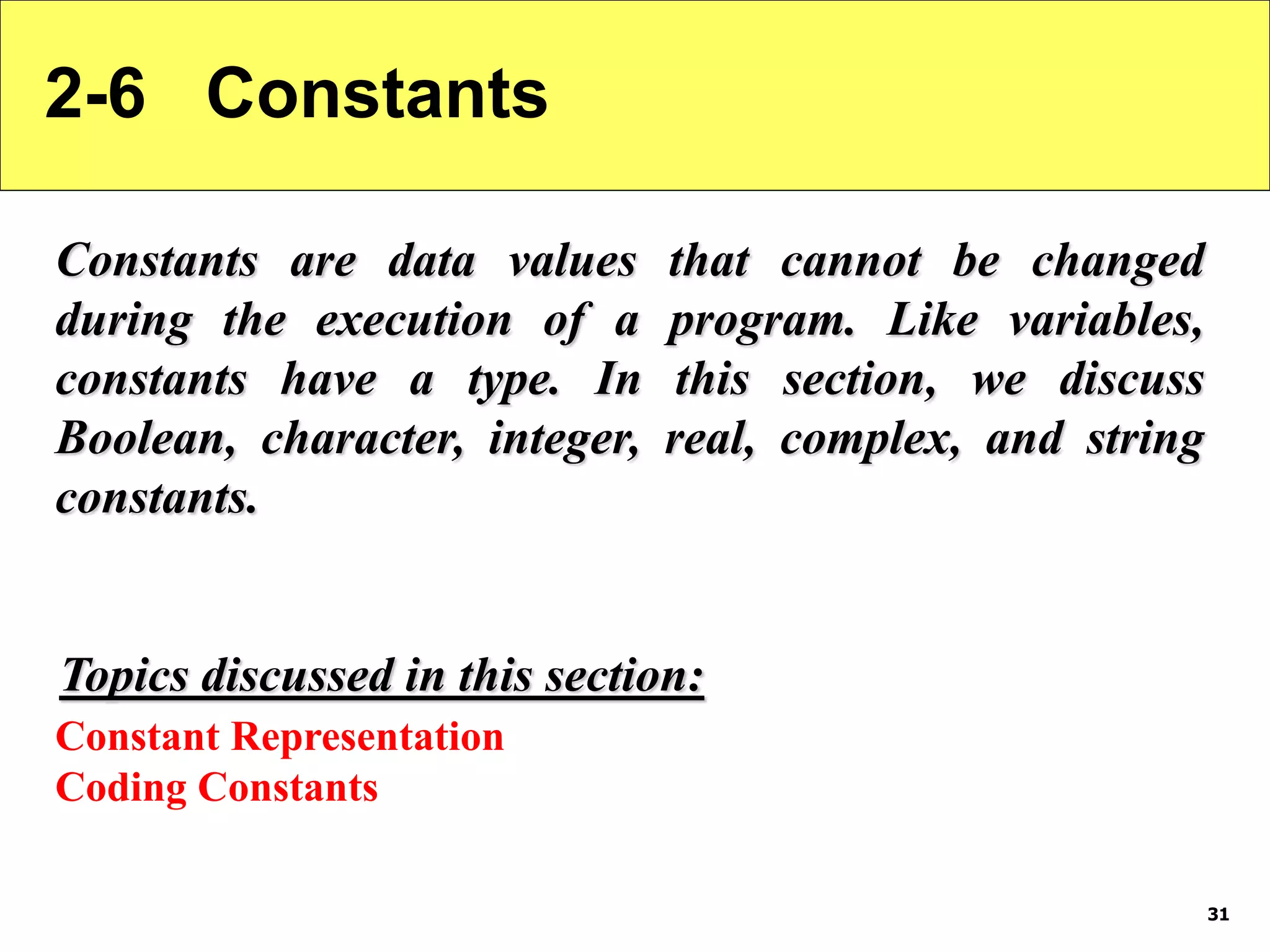
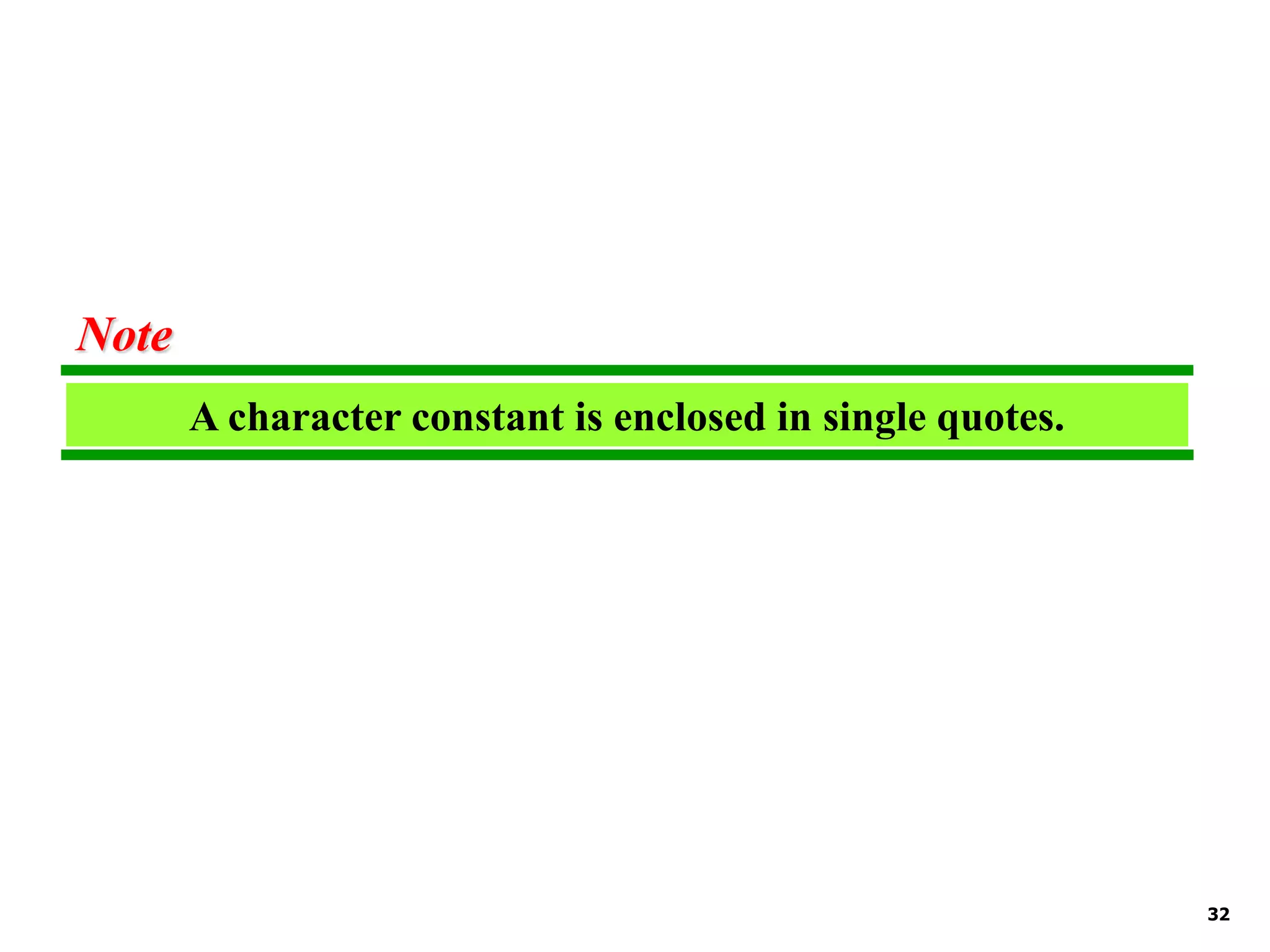
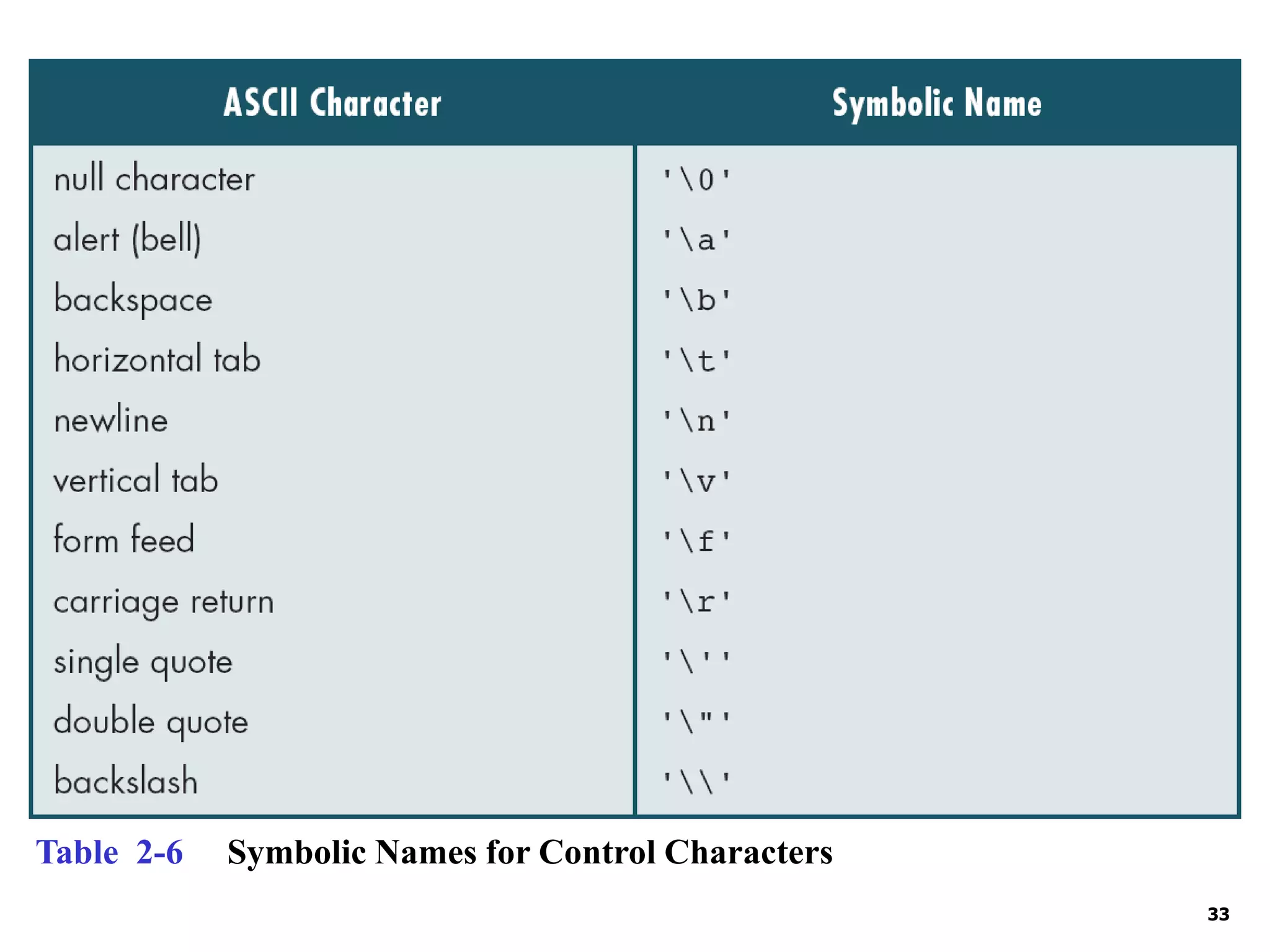
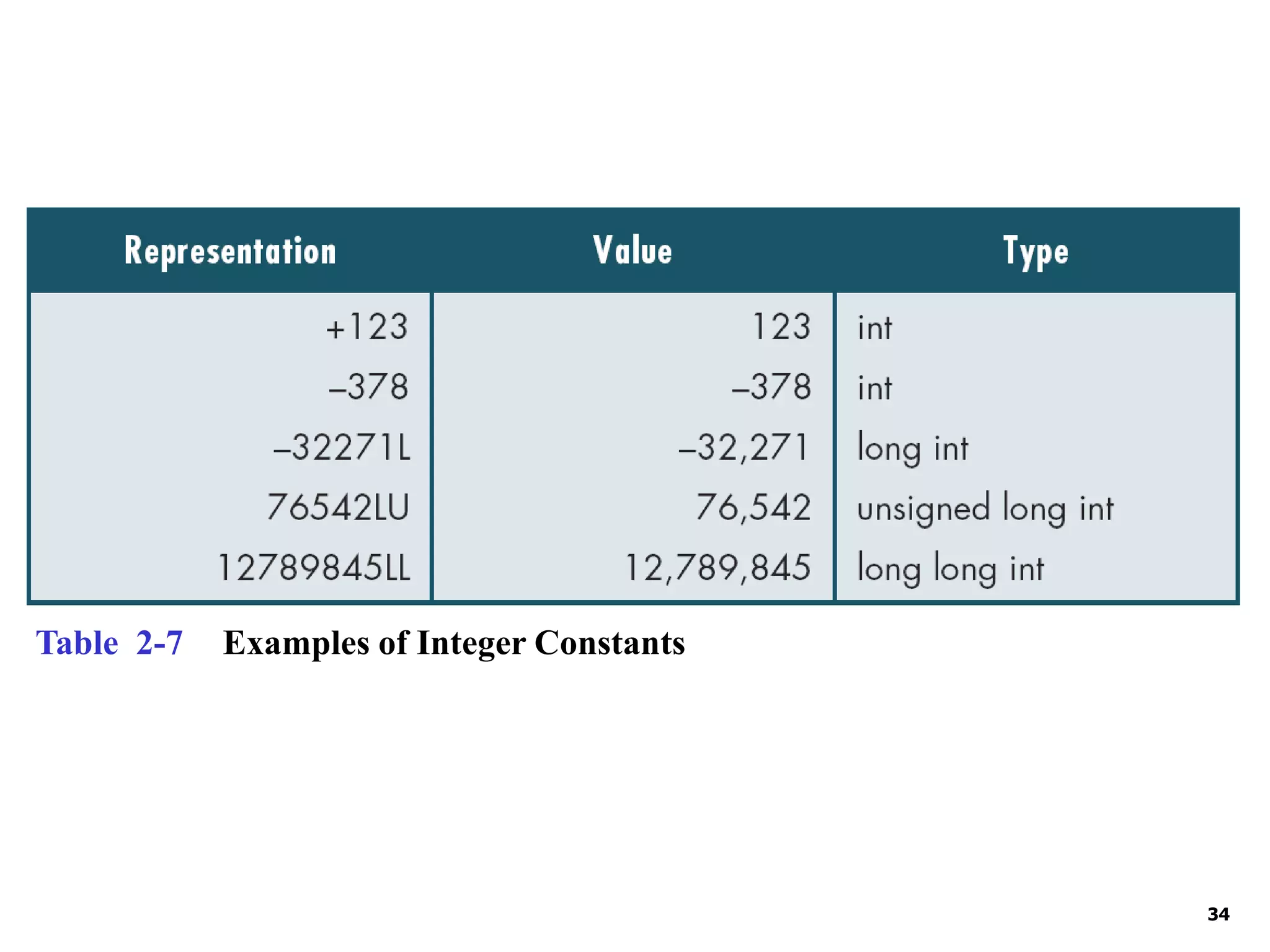
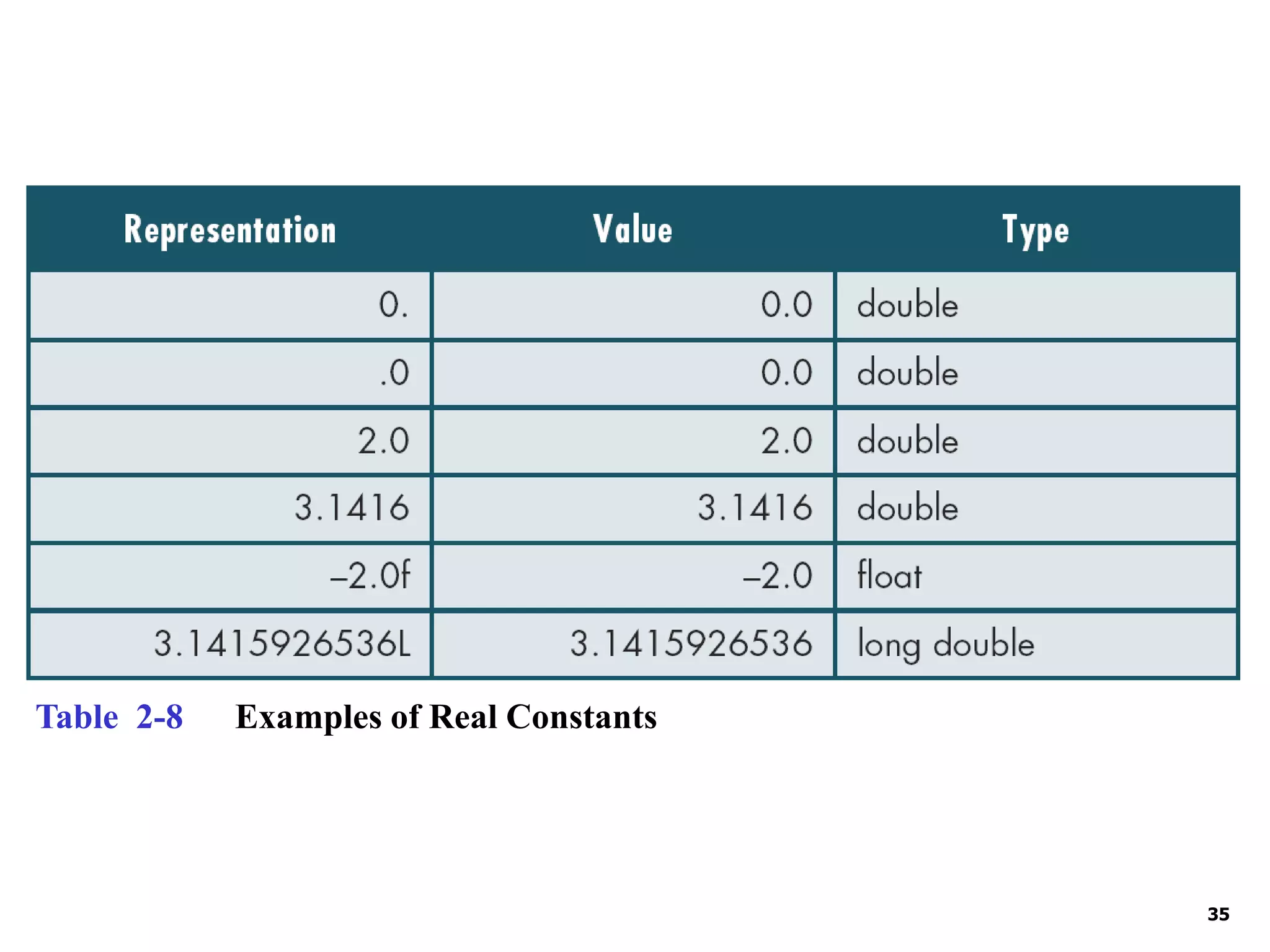
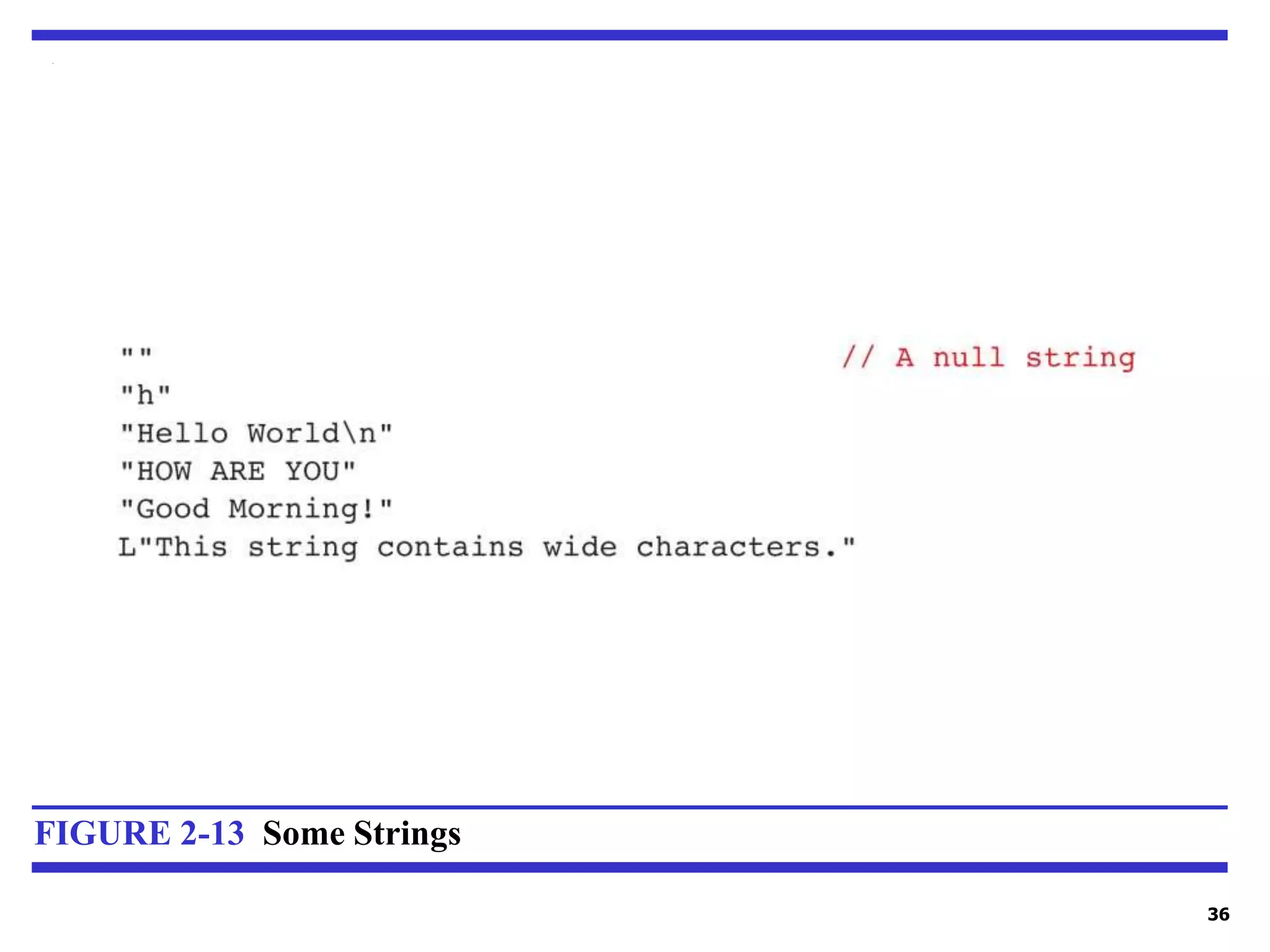
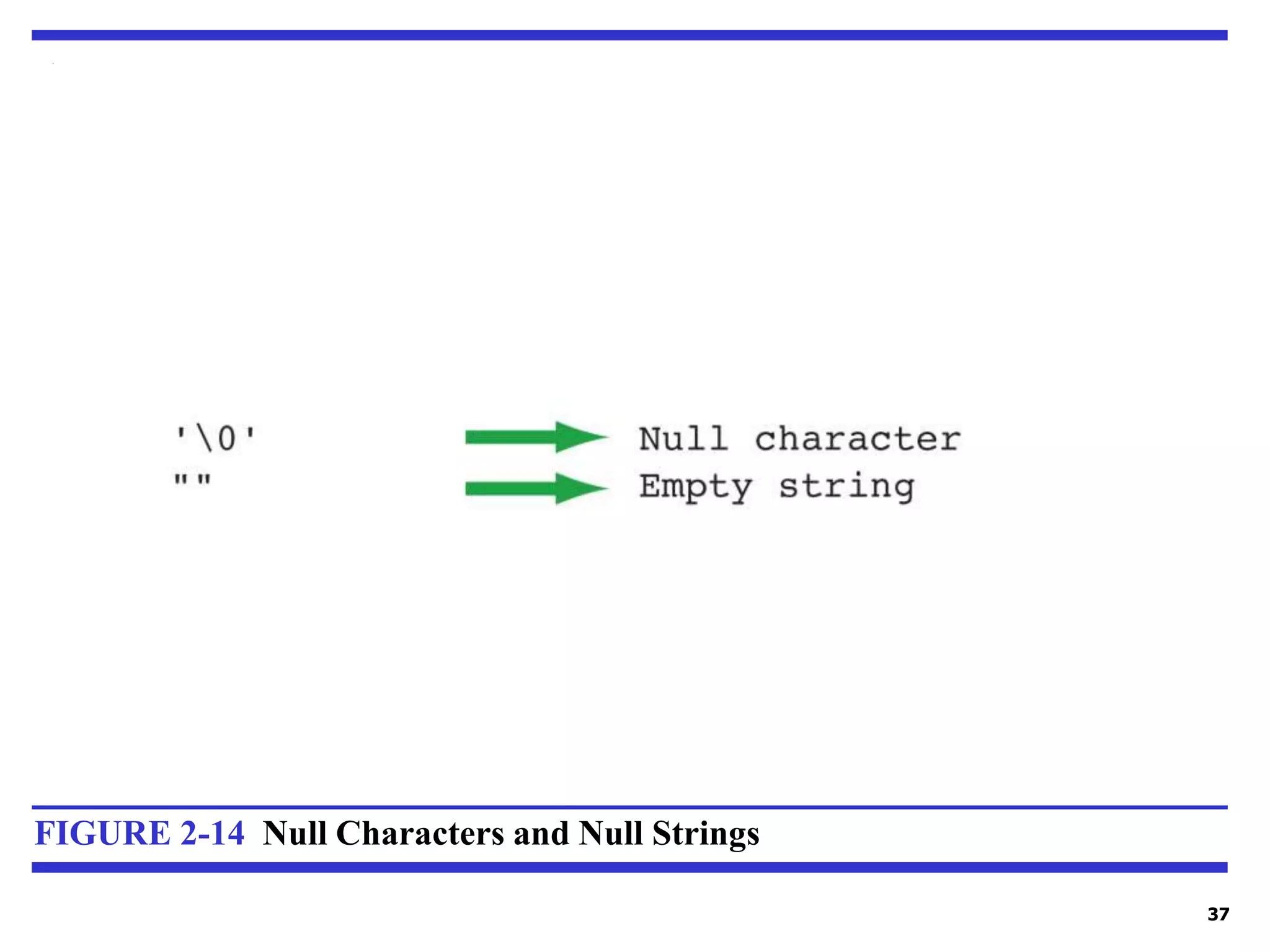
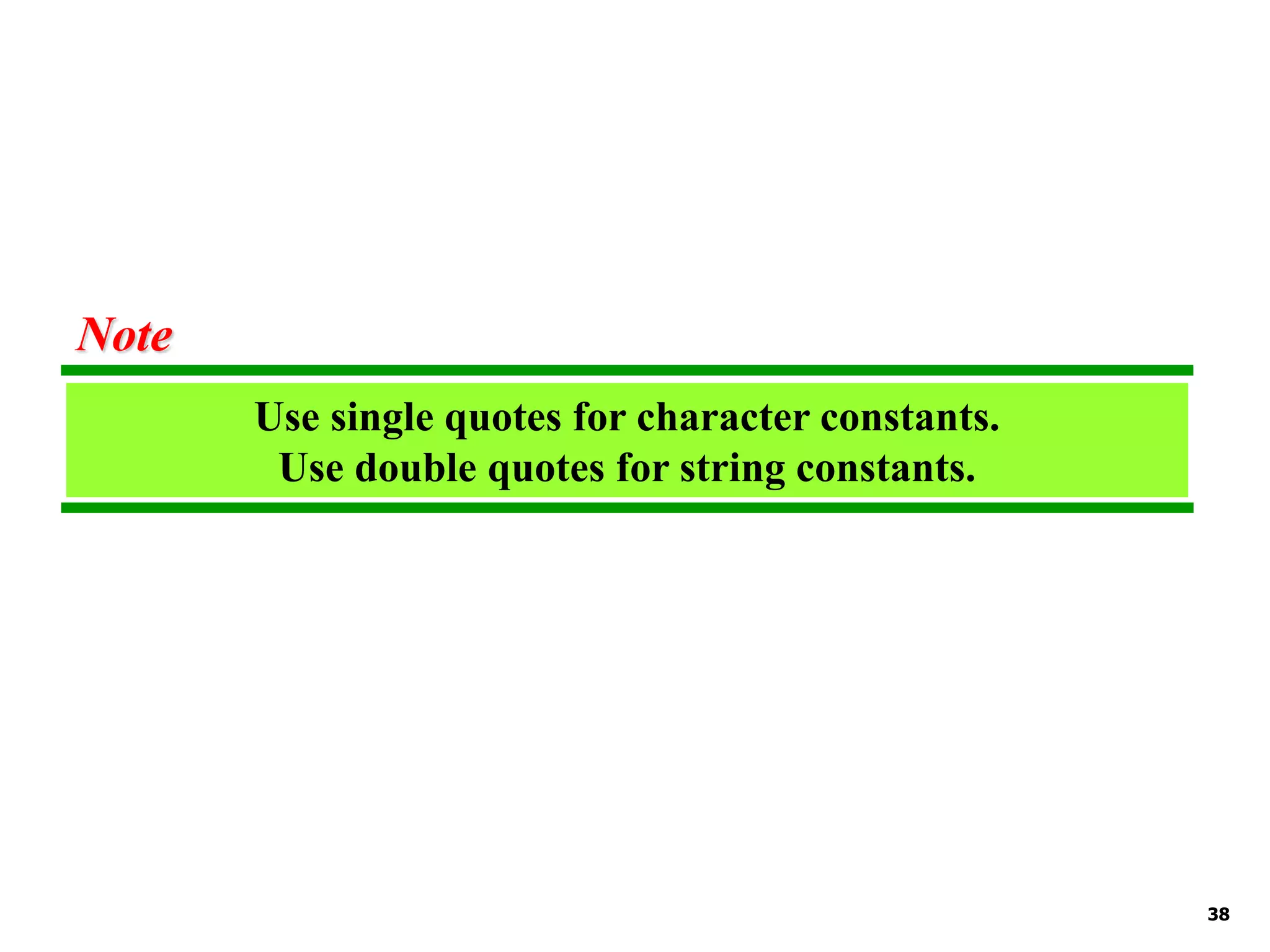
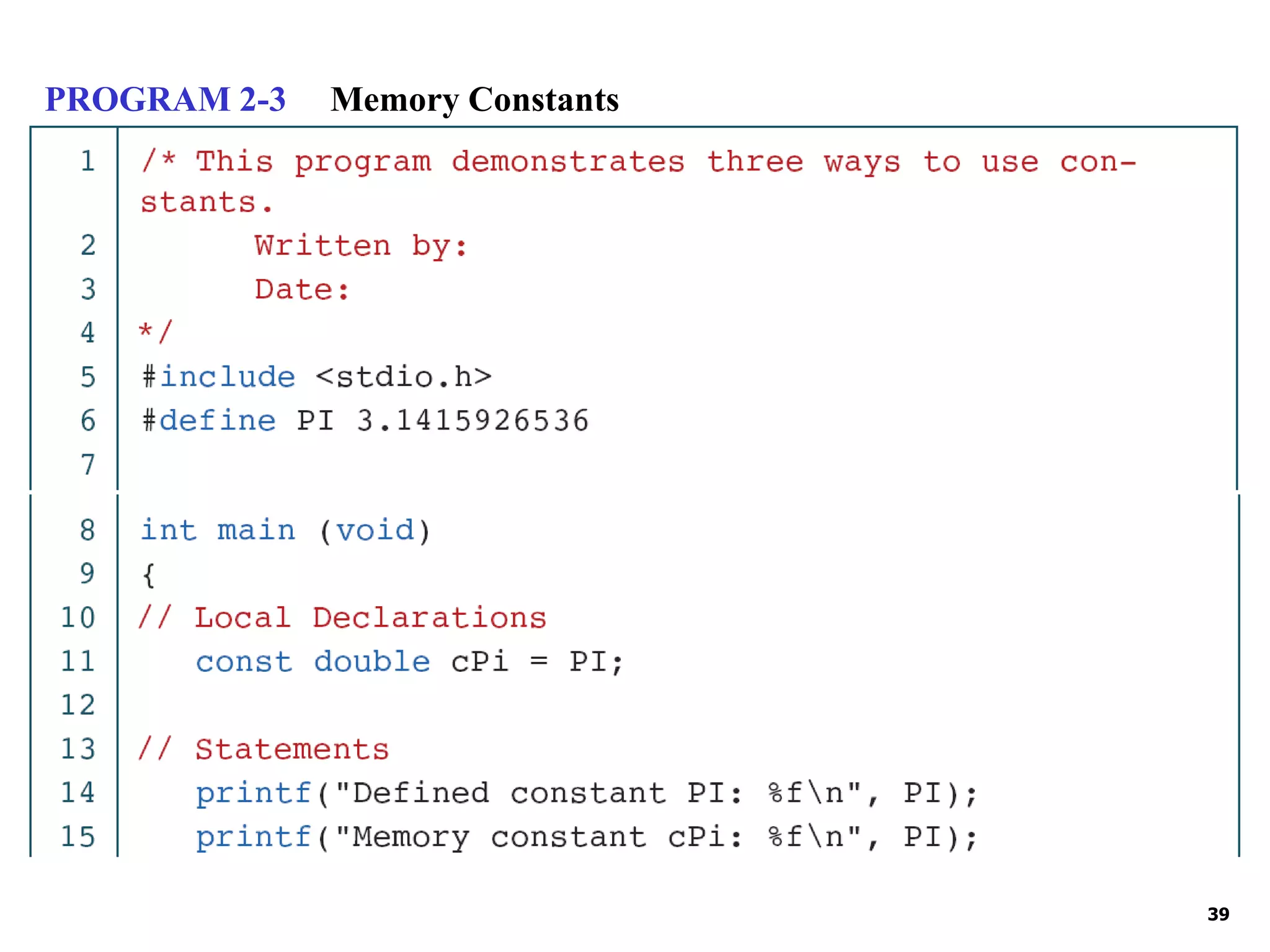
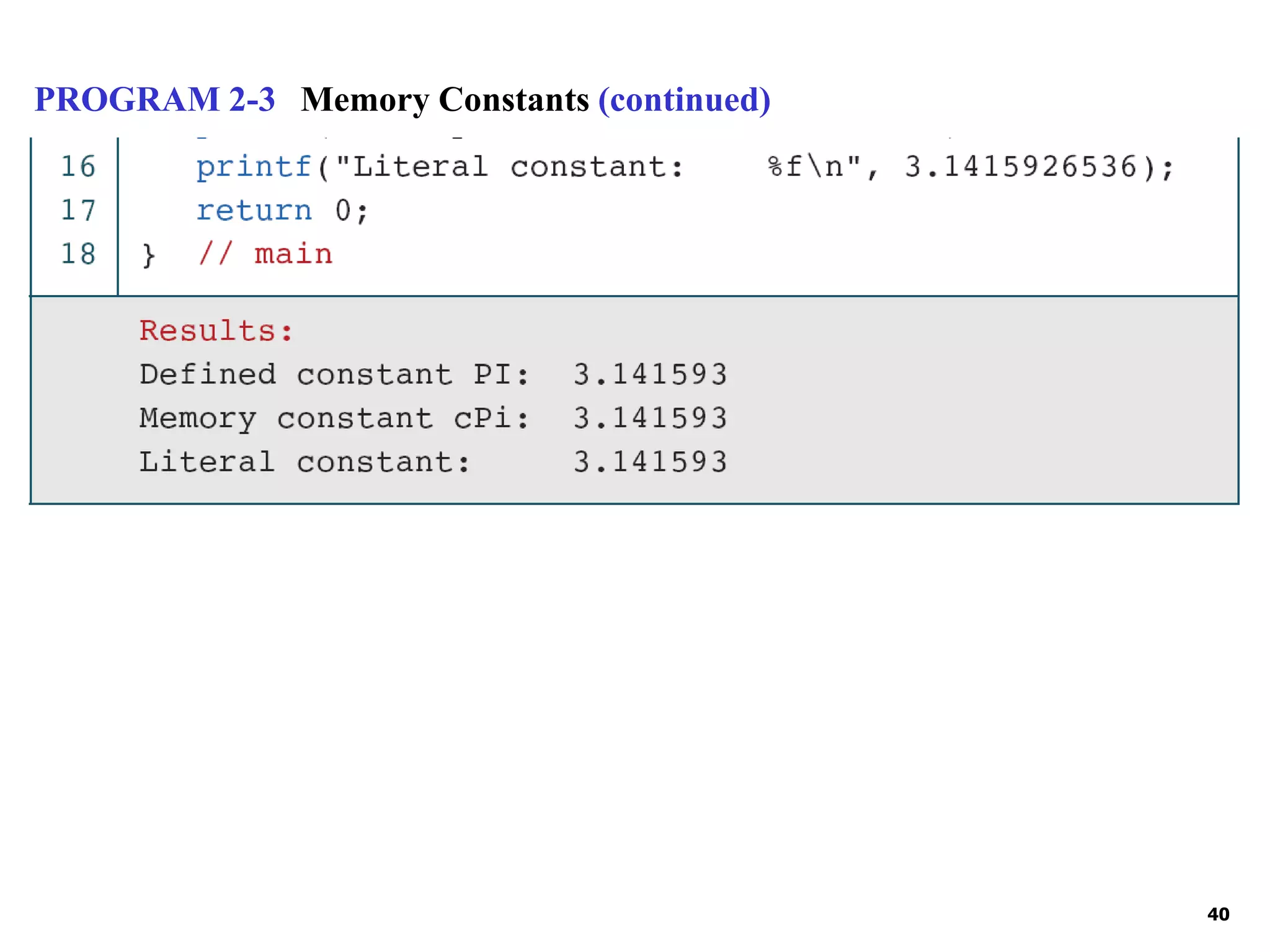
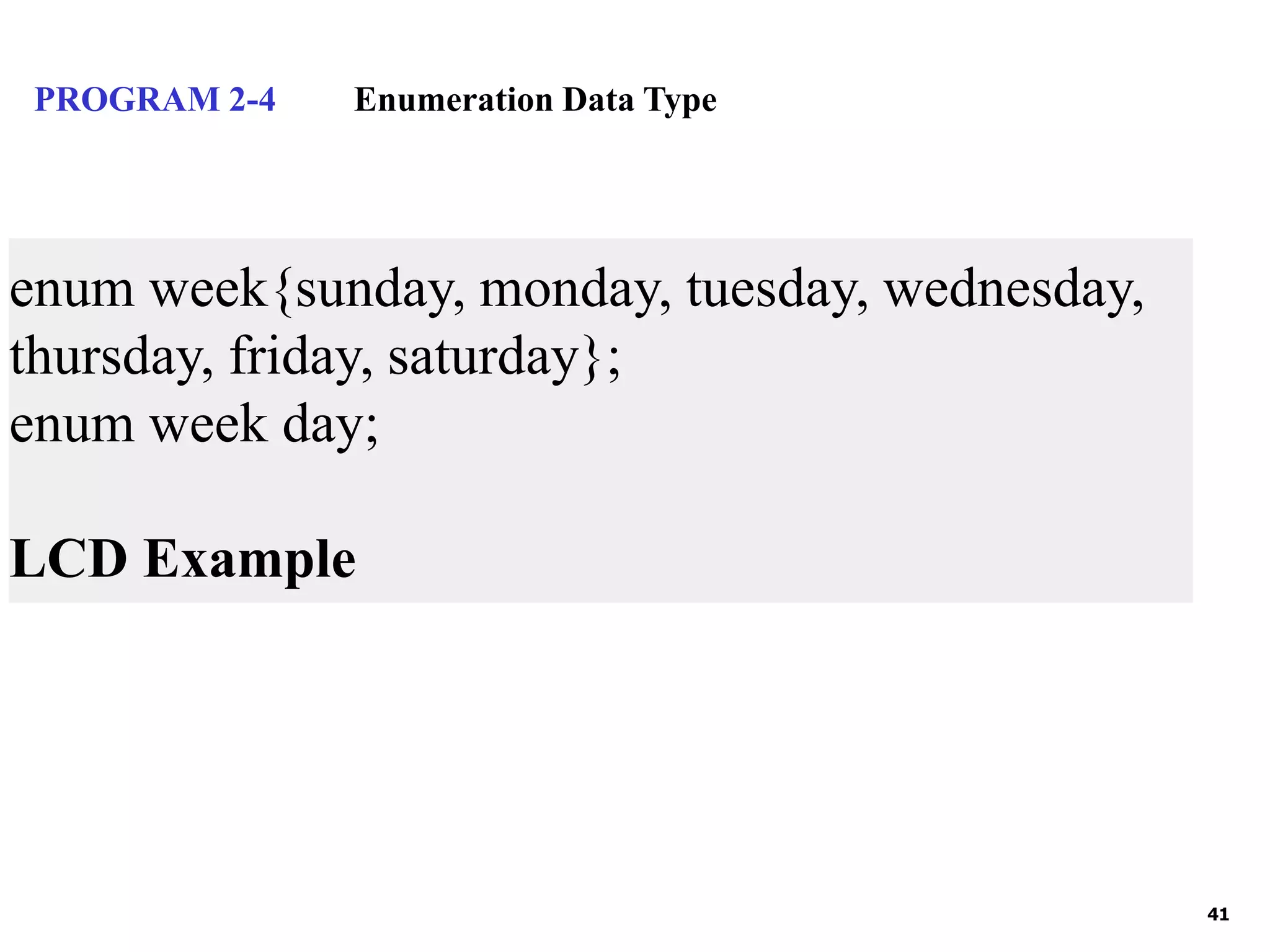
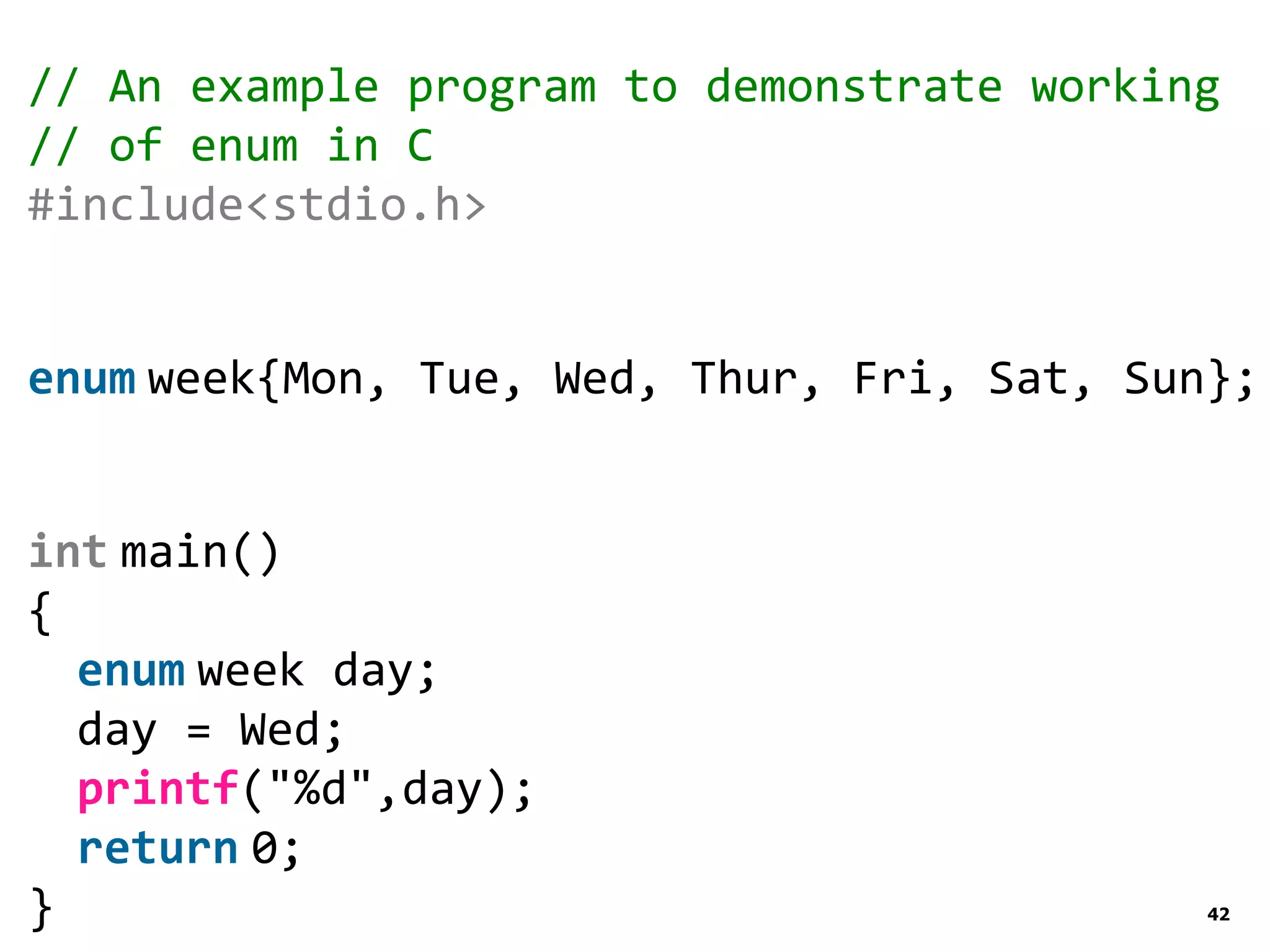
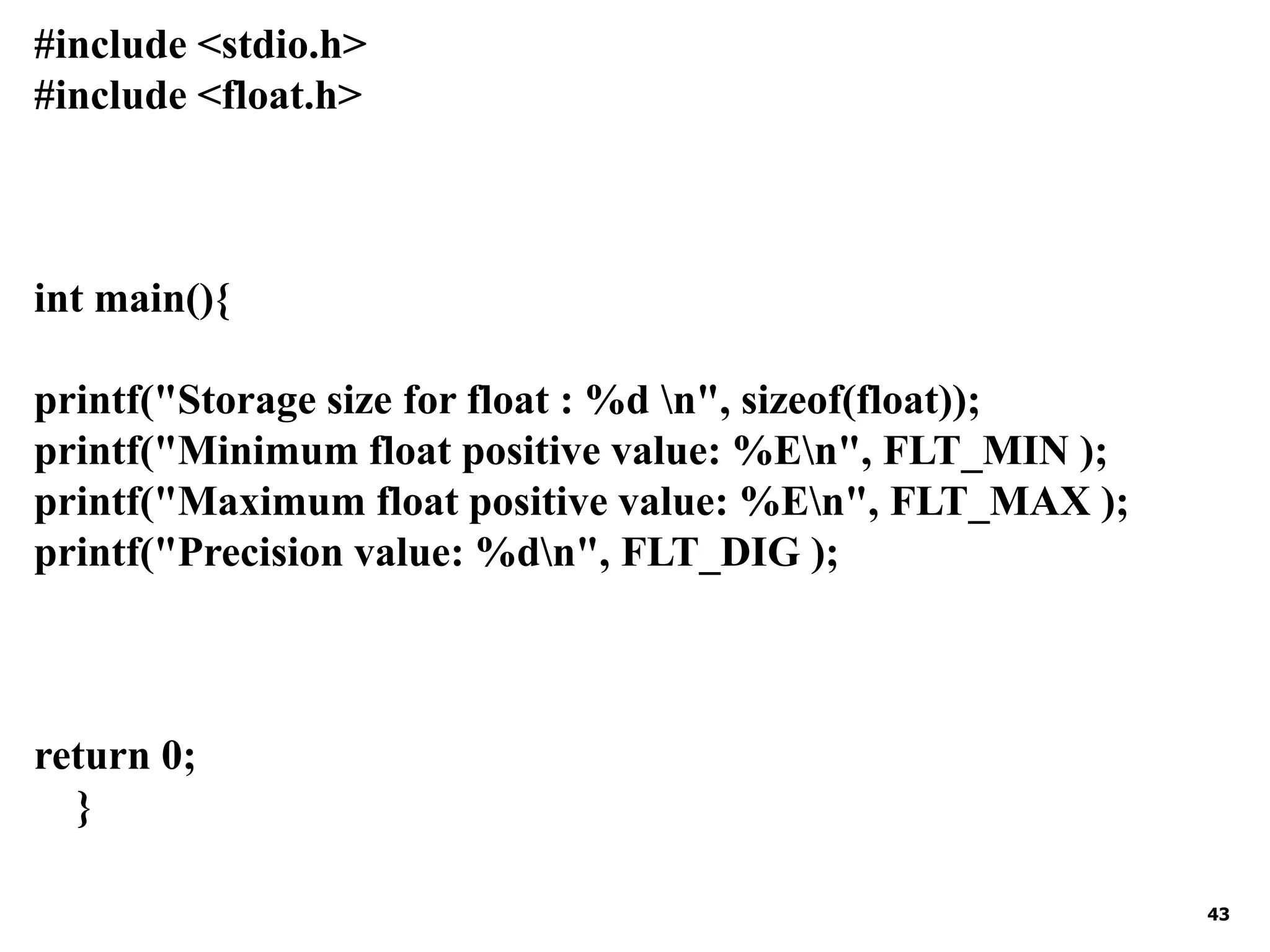
![44 USER DEFINED (DATA) TYPES Keyword Size Note struct ≥ sum of size of each member An aggregate type which can contain more than one different types. tag or label is optional struct theEmployee { int age; double salary; char department; char name[15]; char address[5][25]; }; struct theEmployee workerRec; typedef struct { int x; int SomeArray[100]; } MyFoo; int main() { MyFoo strctVar; return 0; } struct newPoint { short xPoint; short yPoint; } justPoint; justPoint thePoint;](https://image.slidesharecdn.com/cprogrammingintro-220826045556-b9a9d7b4/75/C-Programming-Intro-ppt-44-2048.jpg)
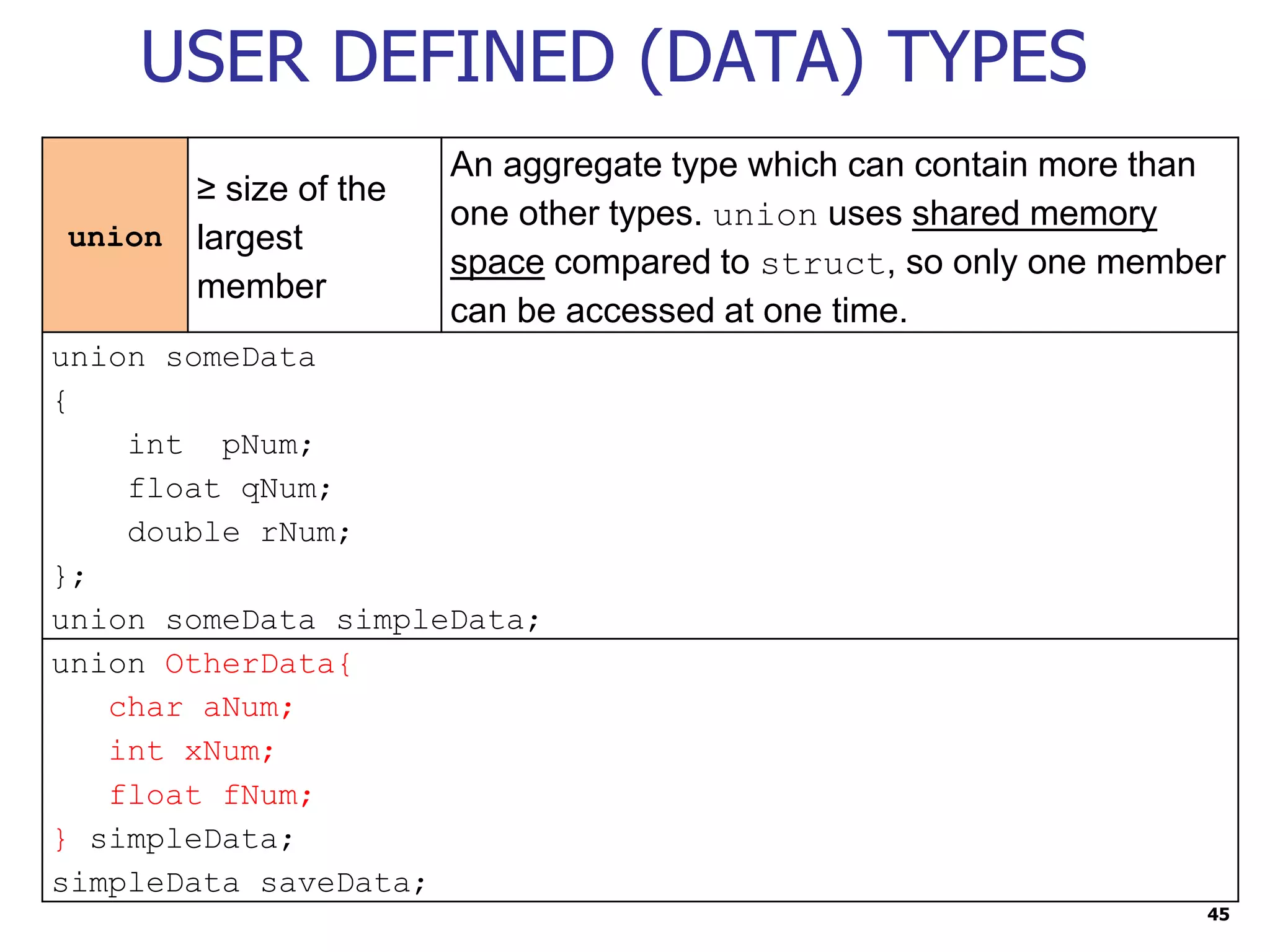
![46 USER DEFINED (DATA) TYPES typedef same as the type; being given a new name typedef used to give new identifier names or alias (to simplify the long identifier names), normally used for aggregate defined types. typedef unsigned char BYTE; /* Declares BYTE to be a synonym for unsigned char */ typedef float FLOAT; /* Declares FLOAT (uppercase letter) to be a synonym for unsigned float (lowercase) */ tag or label is optional typedef struct simpleData { int nData; char cData; } newNameType; Or typedef struct { int nData; char cData;} newNameType; newNameType strctType; typedef struct TOKEN_SOURCE { CHAR SourceName[8]; LUID SourceIdentifier; } TOKEN_SOURCE, *PTOKEN_SOURCE; TOKEN_SOURCE newToken; typedef union unData{ double lngSalary; int nDay; }newUntype; newUnType lntotalSalary; typedef enum DayNames { Monday, Tuesday, Wednesday, Thursday, Friday, Saturday, Sunday } Weekdays; Weekdays dayOfWeek;](https://image.slidesharecdn.com/cprogrammingintro-220826045556-b9a9d7b4/75/C-Programming-Intro-ppt-46-2048.jpg)
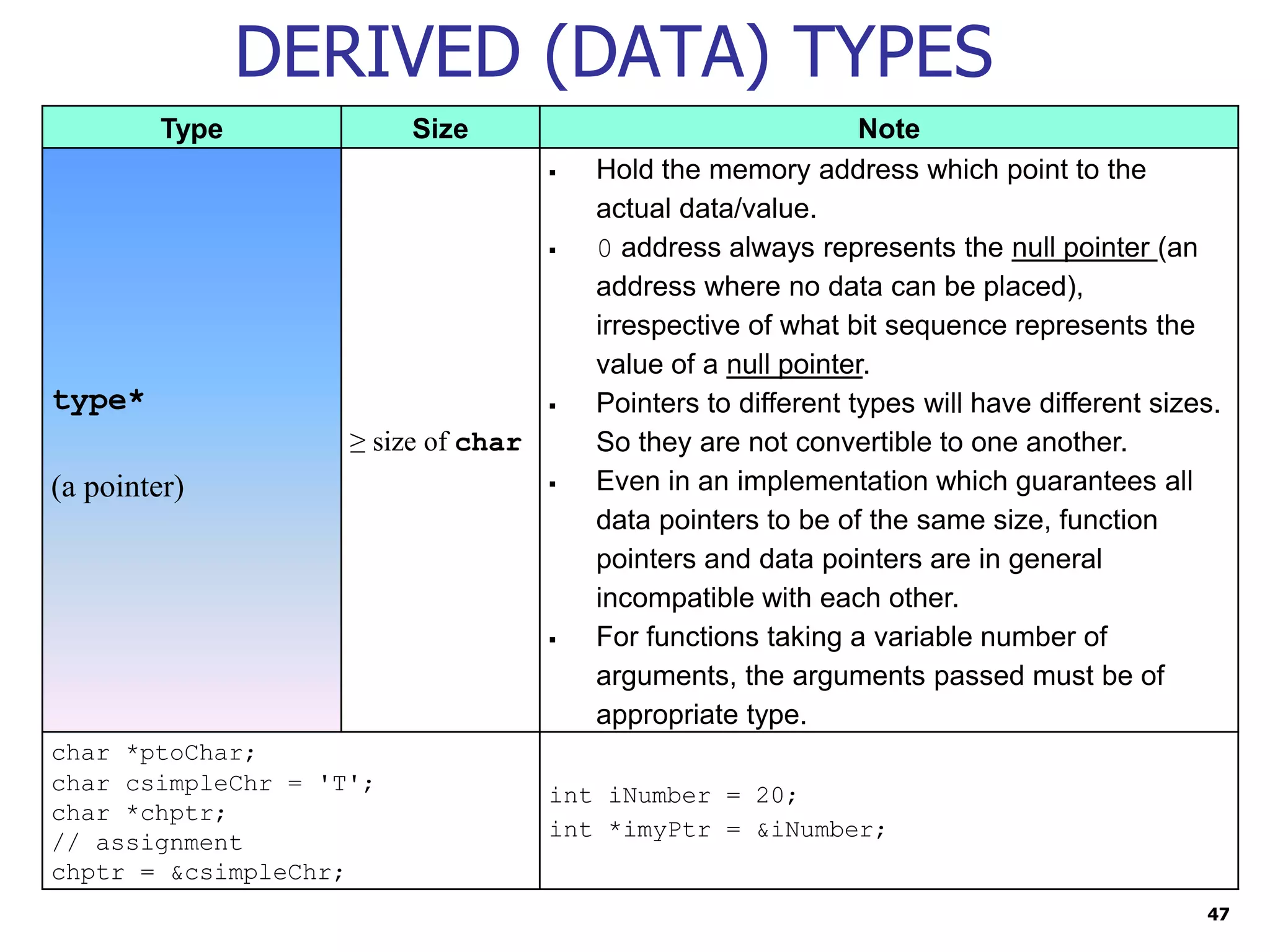
![48 DERIVED (DATA) TYPES type [integer] (an array) ≥ integer × size of type Use to declare a variable with collection of identical properties or types. Simplify variable declaration. In a declaration which also initializes the array (including a function parameter declaration), the size of the array (the integer) can be omitted, which is called unsized. type [ ] is not the same as type*. Only under some circumstances one can be converted to the other. int fstudentNumber[3] = {4,7,1}; int nrowandColumn[1][2] = {34, 21}; int nlongHeightWidth[3][4][5] = 0; char cName1[ ] = {'a','r','r','a','y'}; char cName2[ ] = {"array"}; char cName3[6] = "array"; int nrowCol[2][3] = {4,2,3,7,2,8};](https://image.slidesharecdn.com/cprogrammingintro-220826045556-b9a9d7b4/75/C-Programming-Intro-ppt-48-2048.jpg)